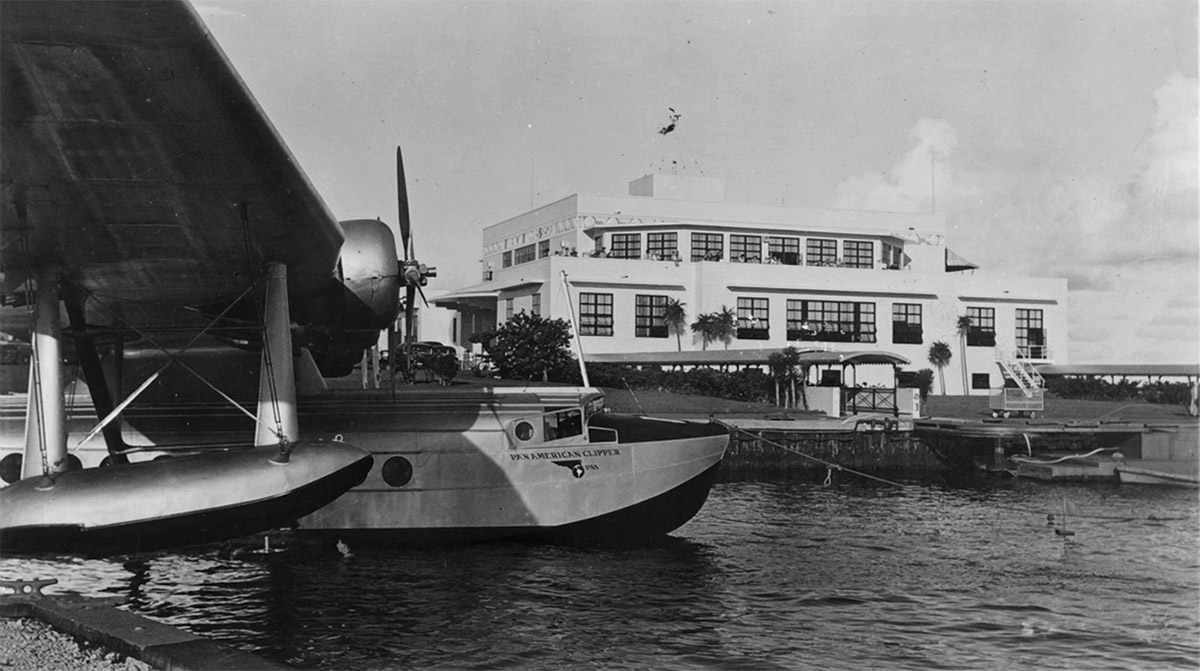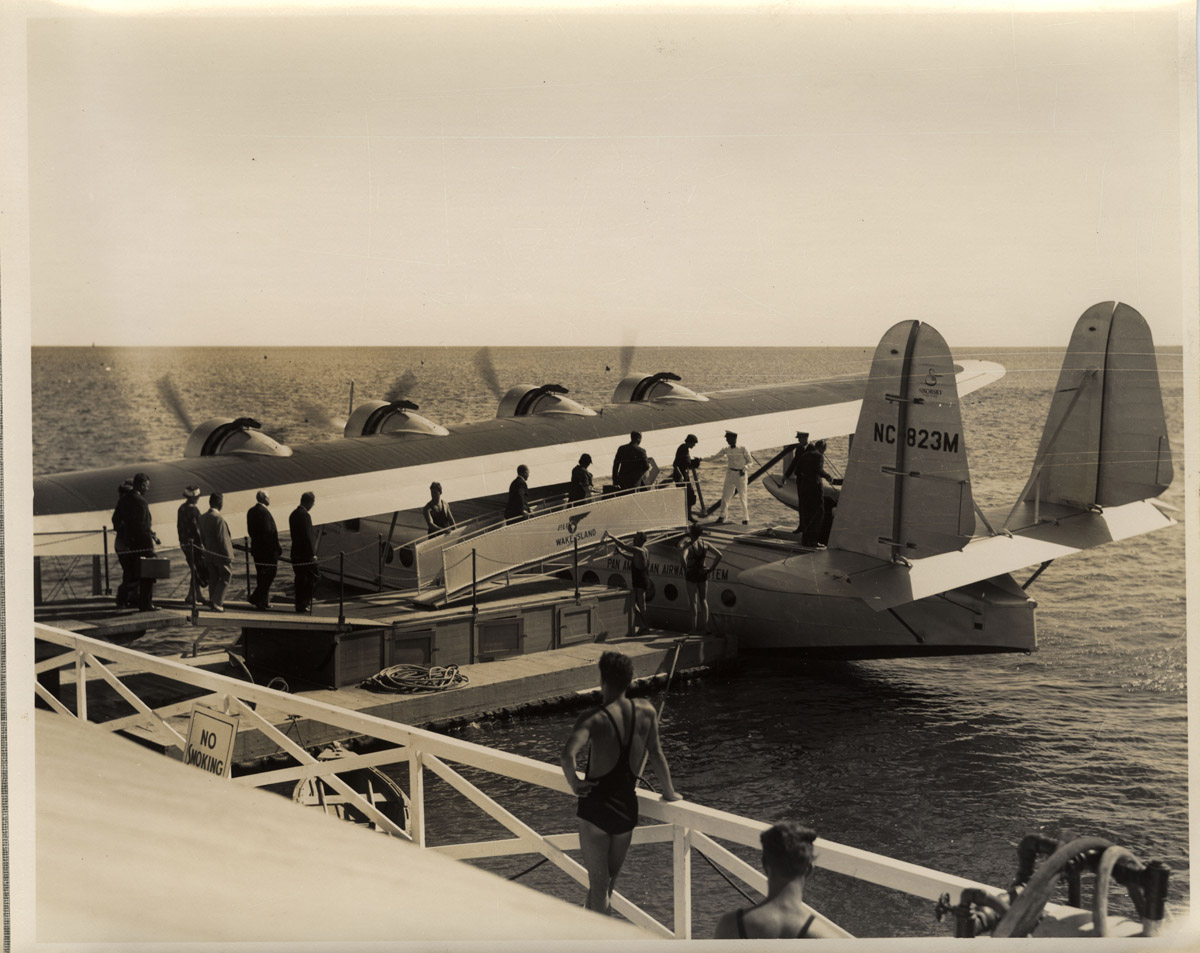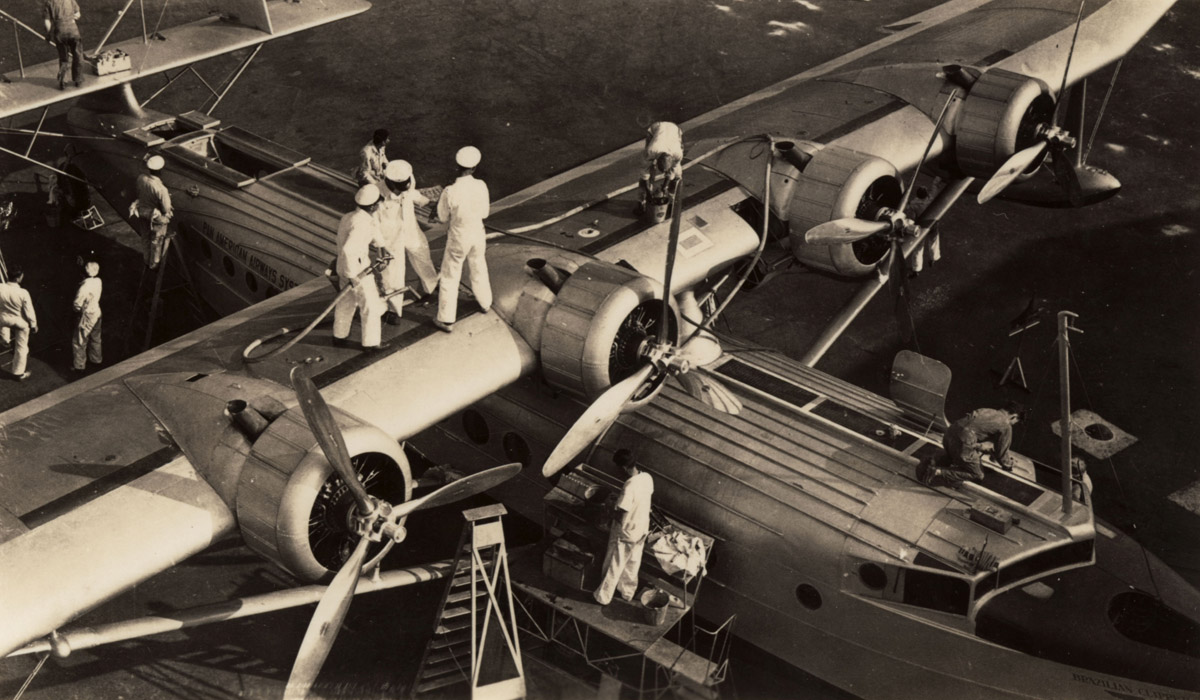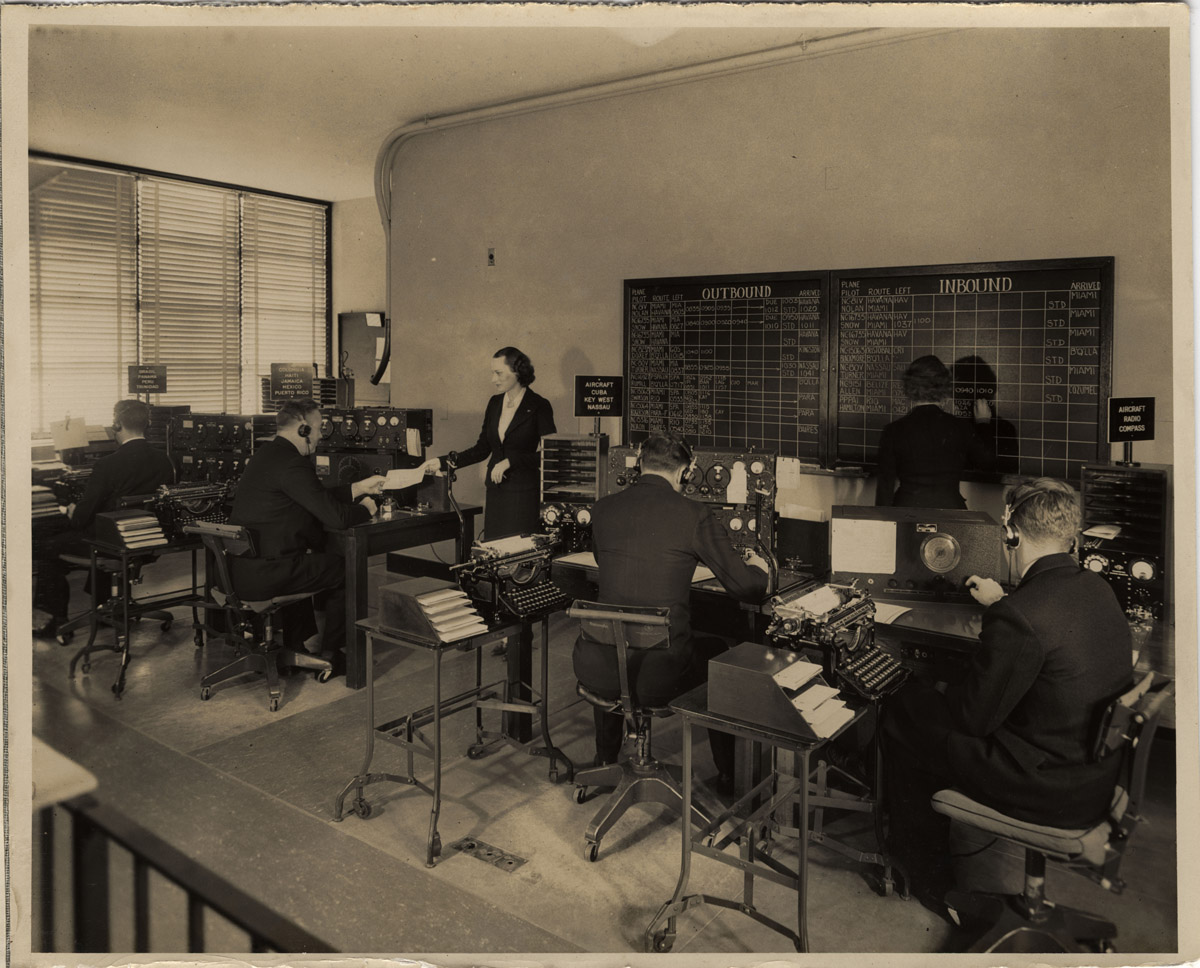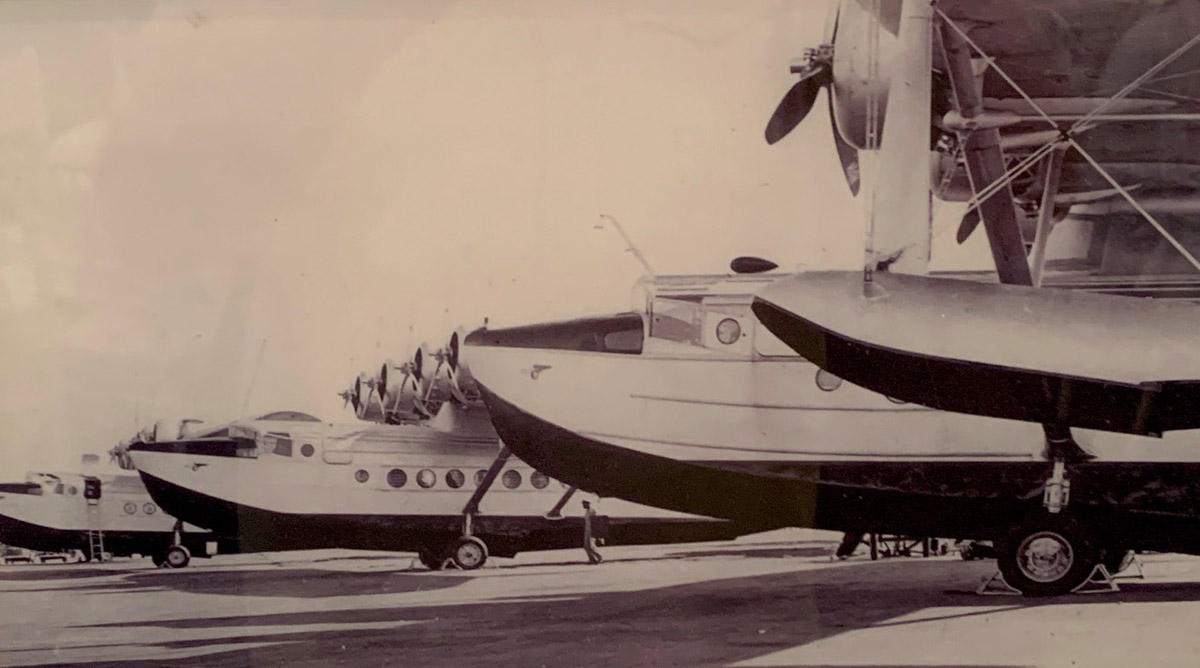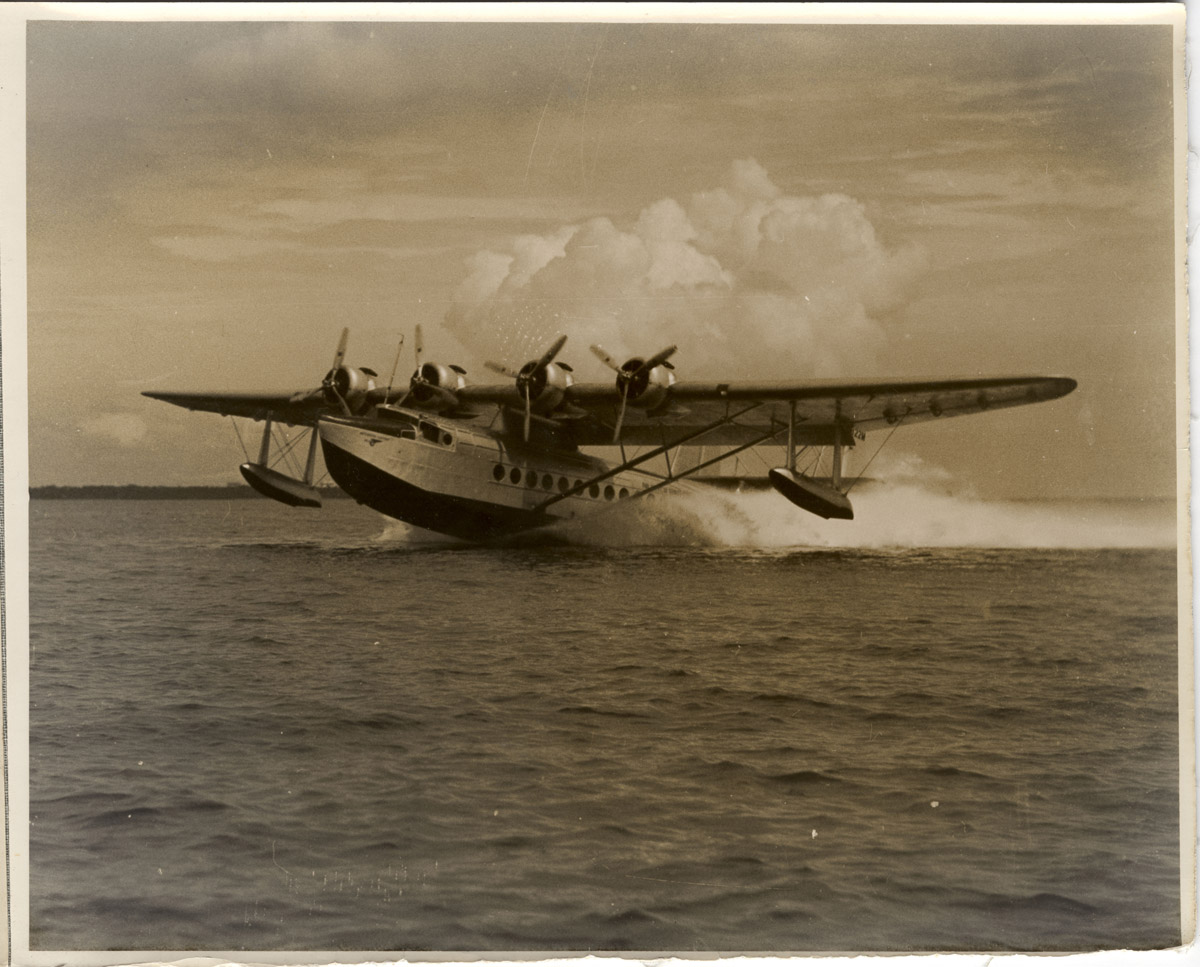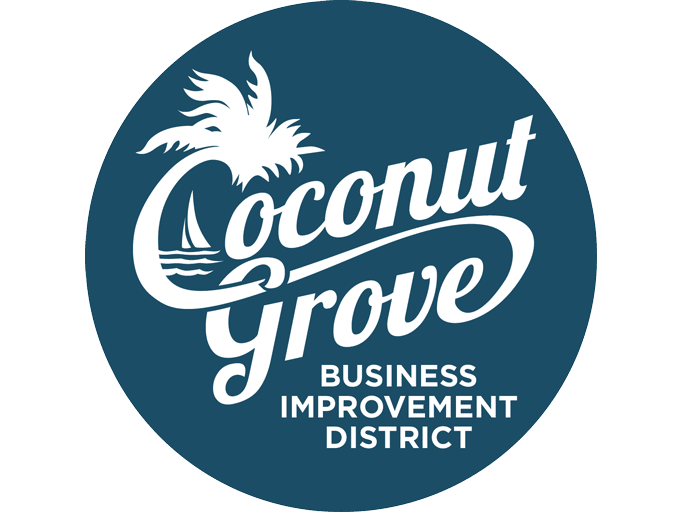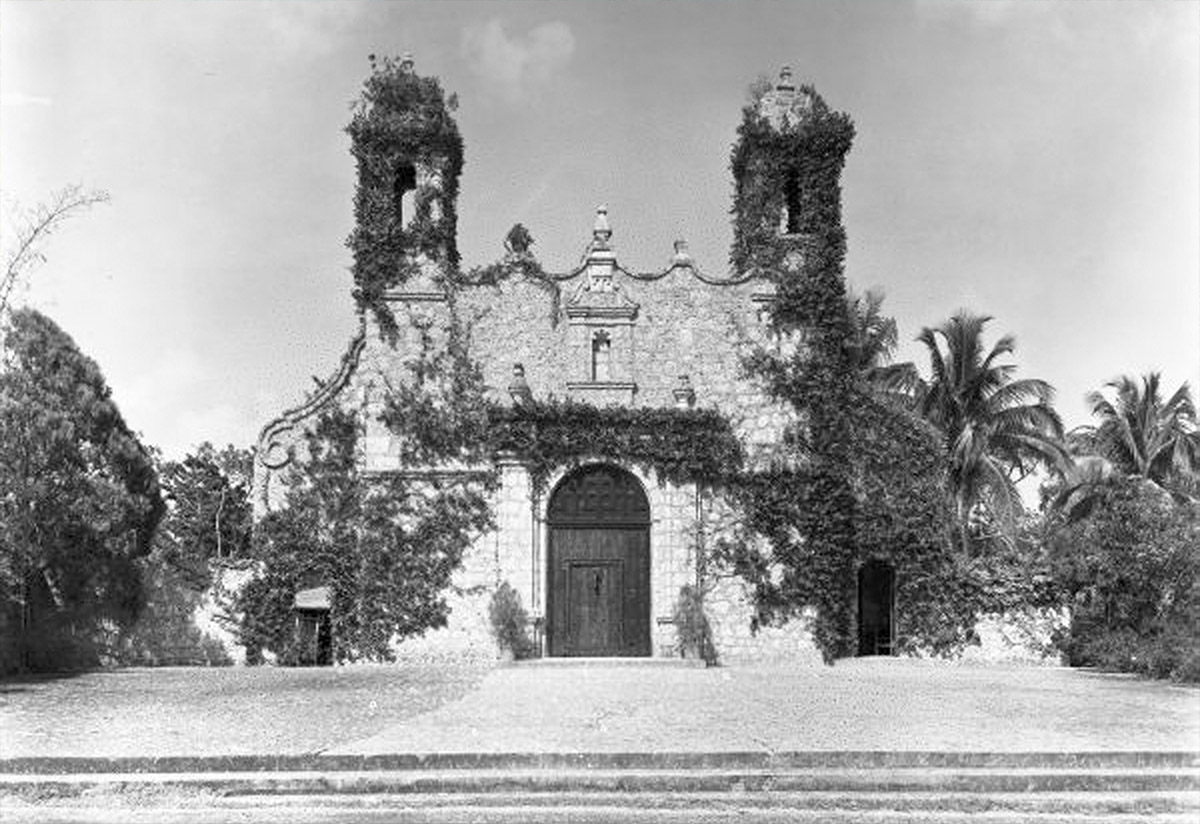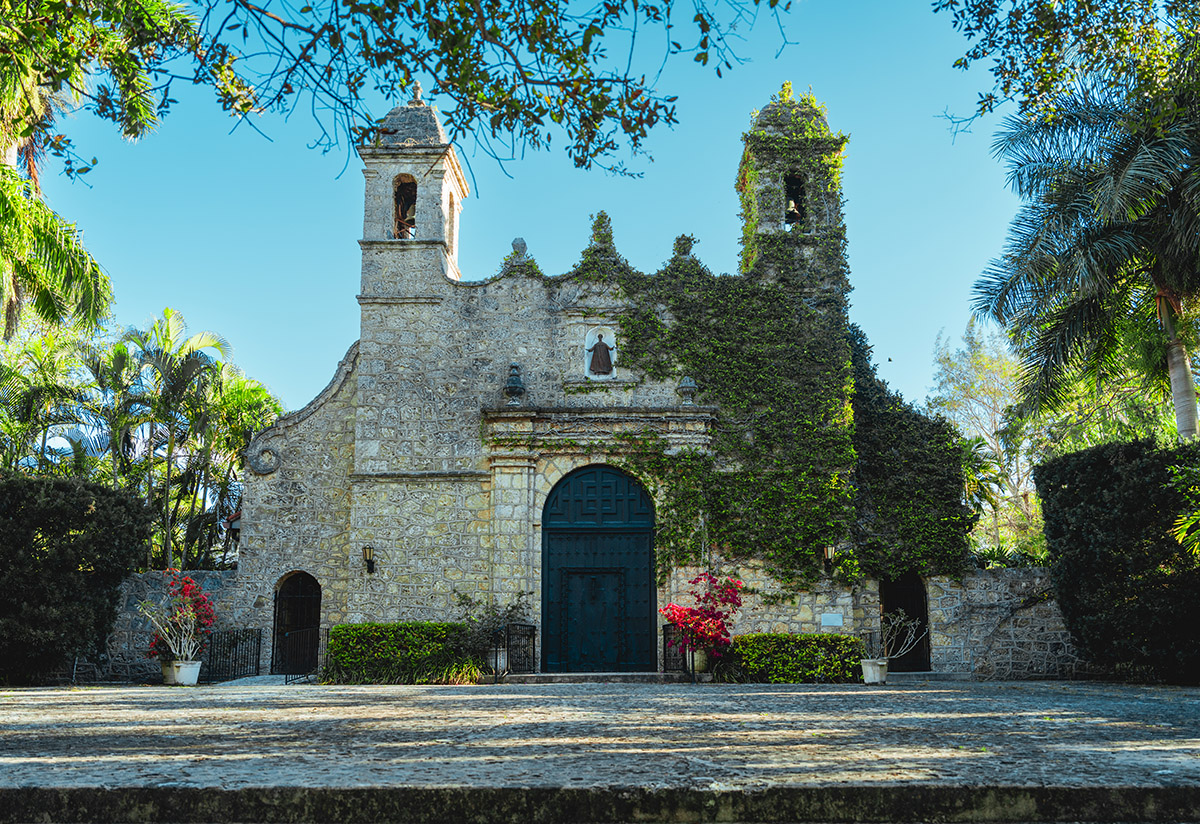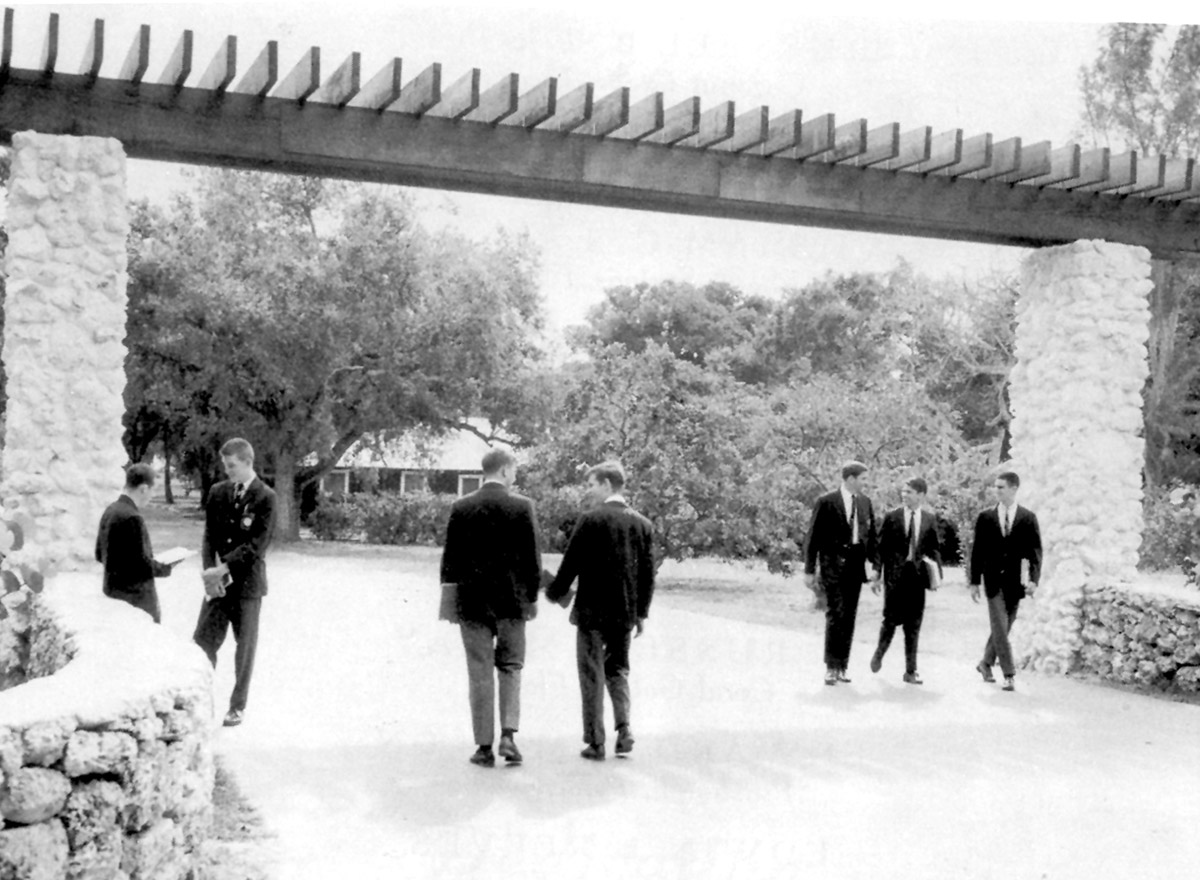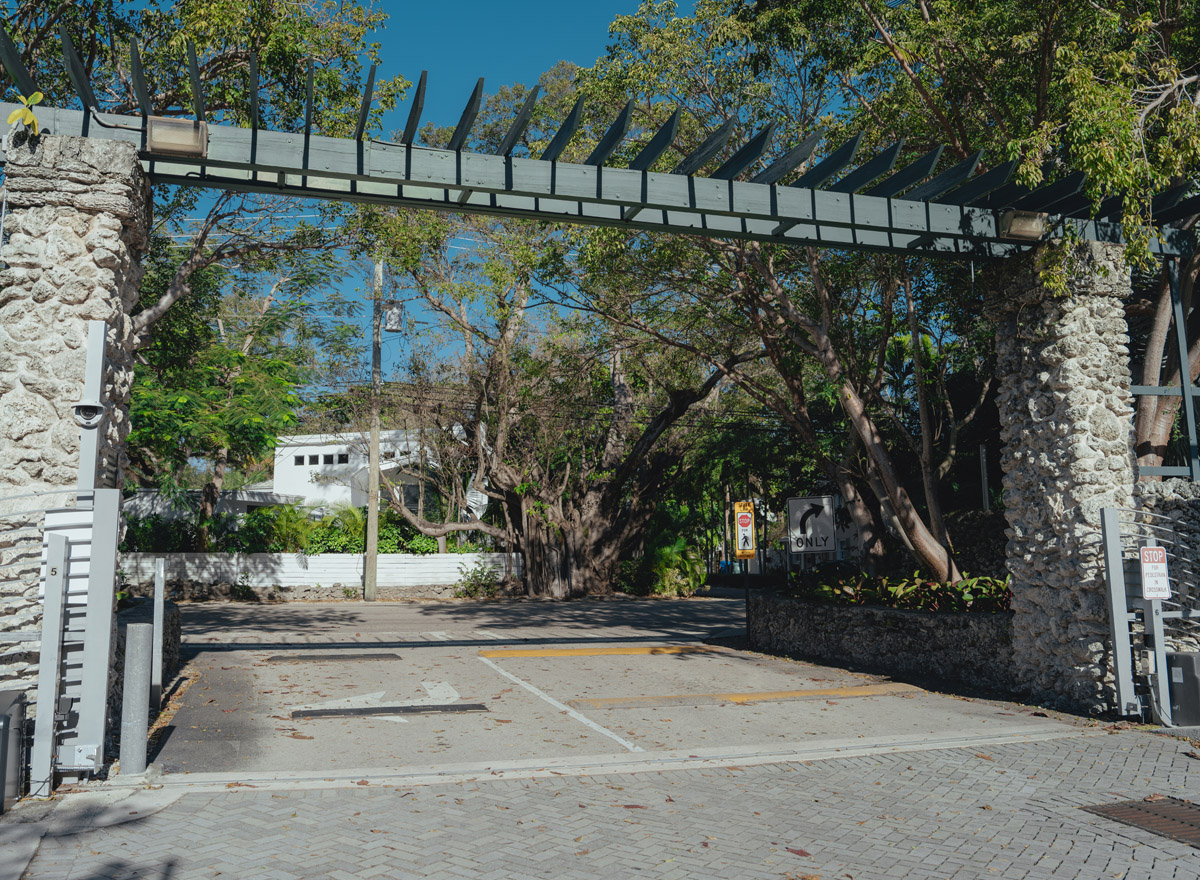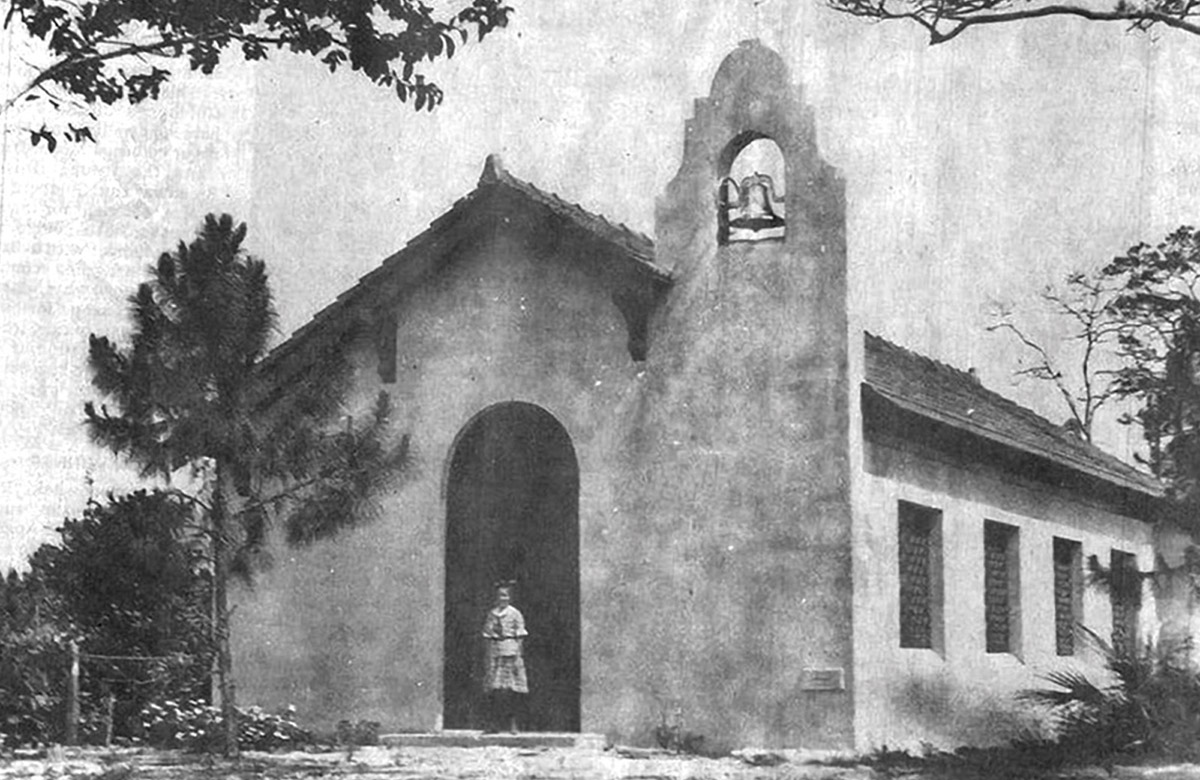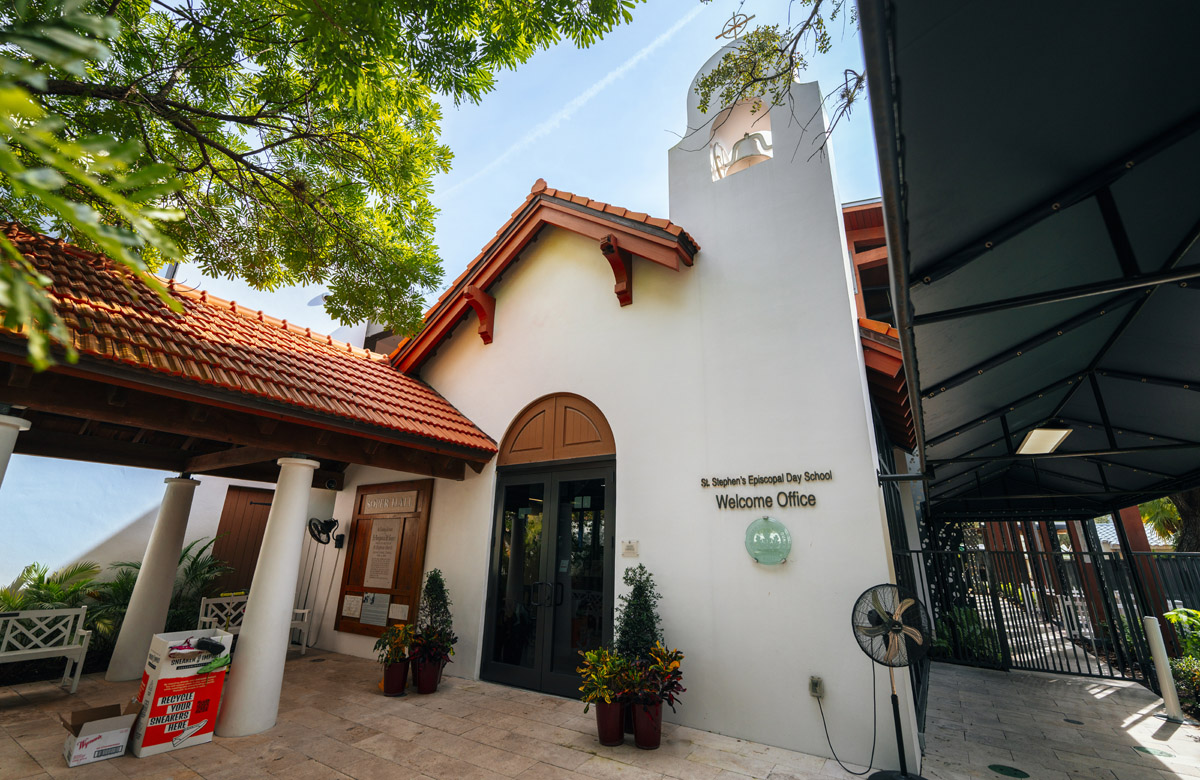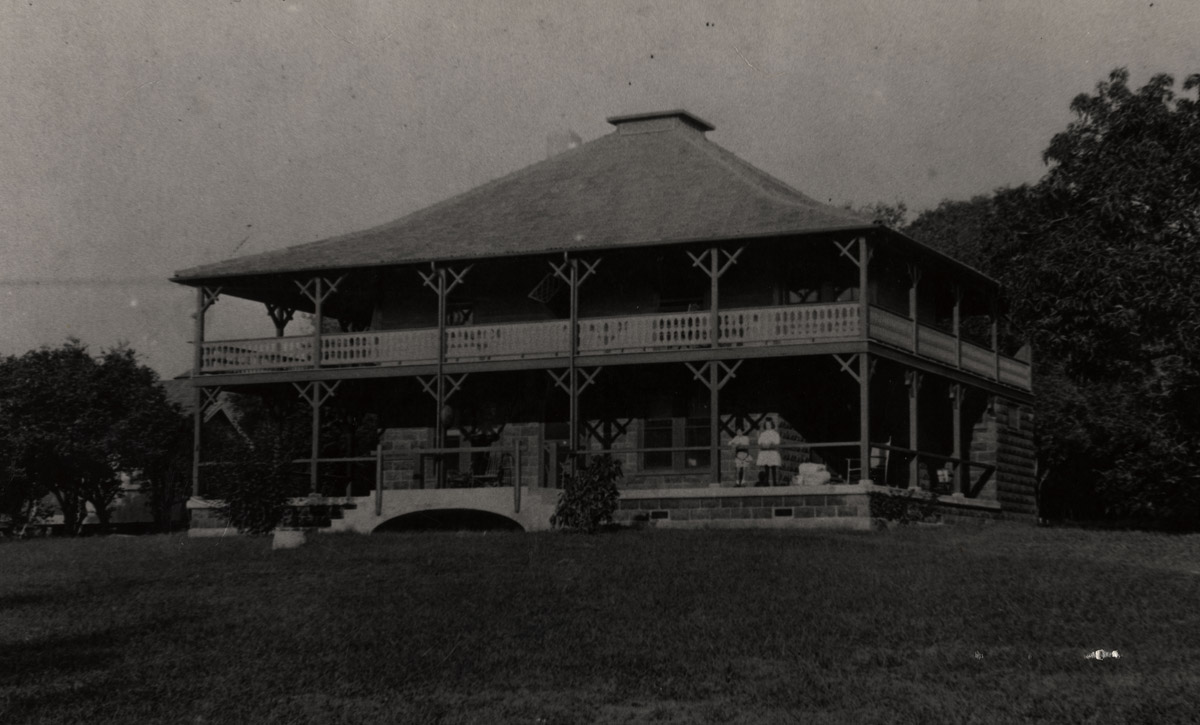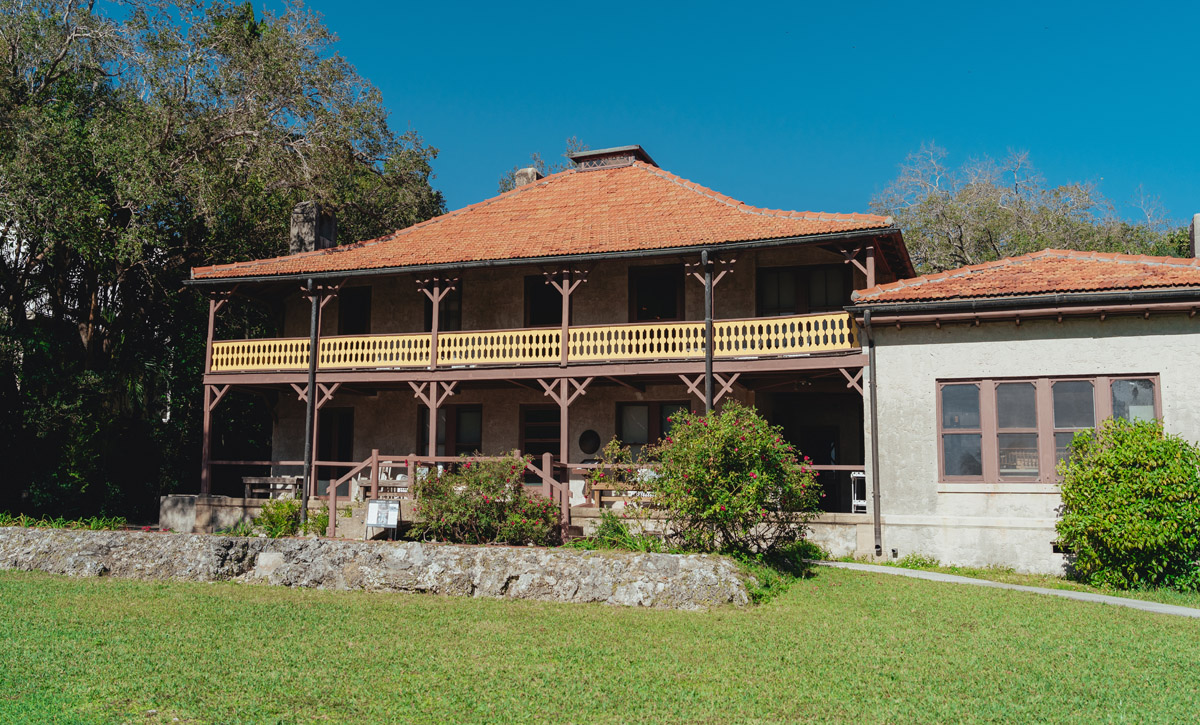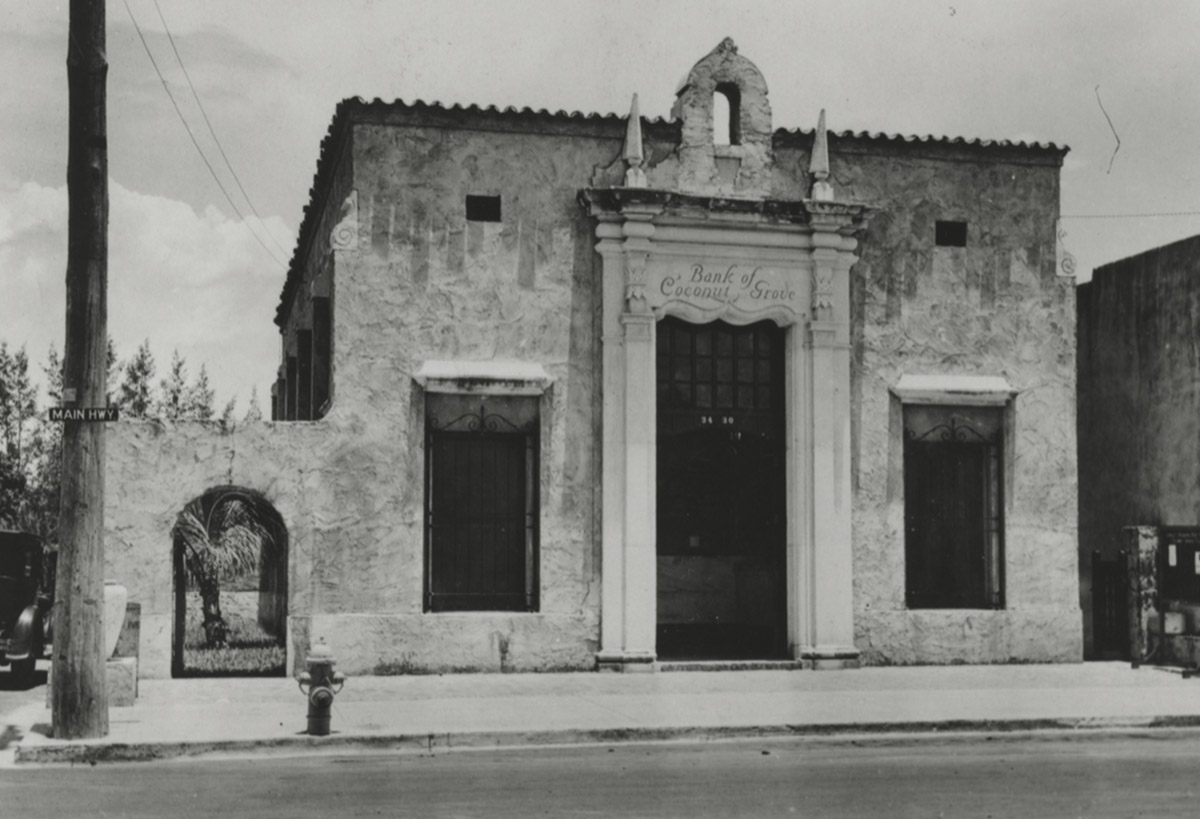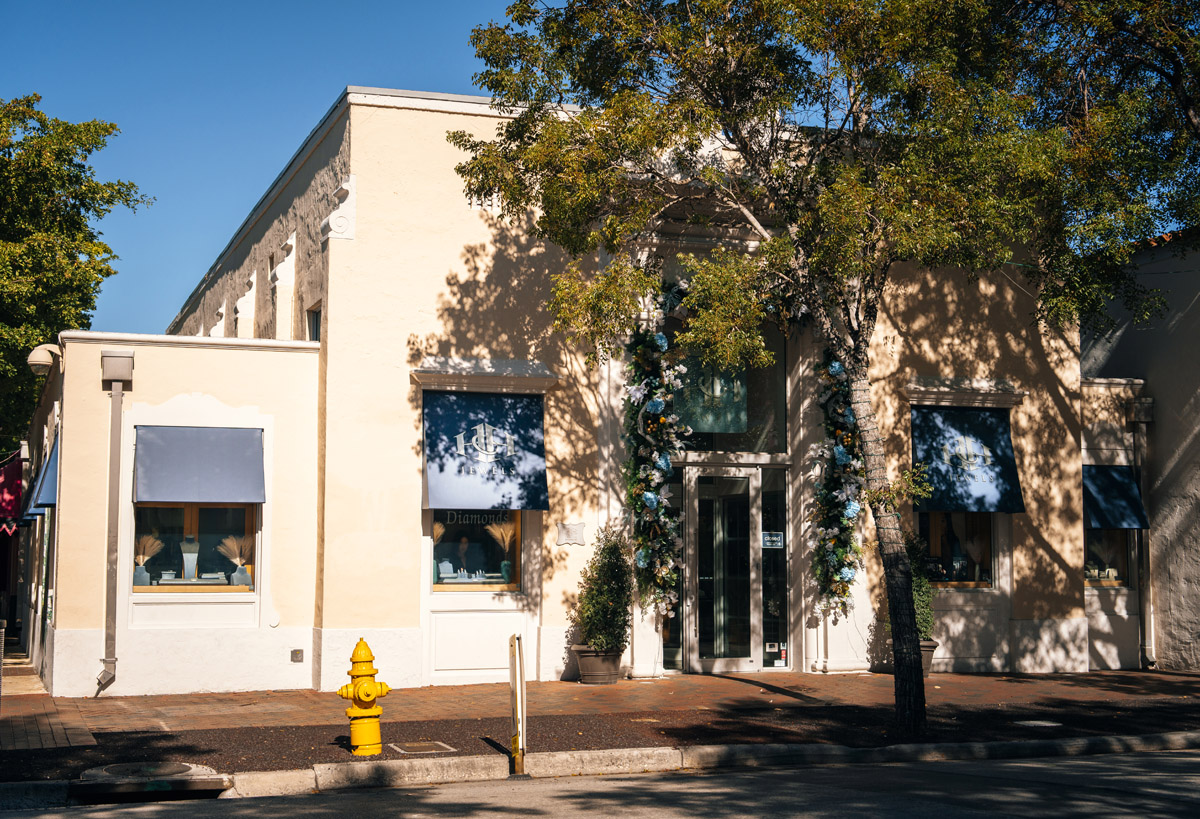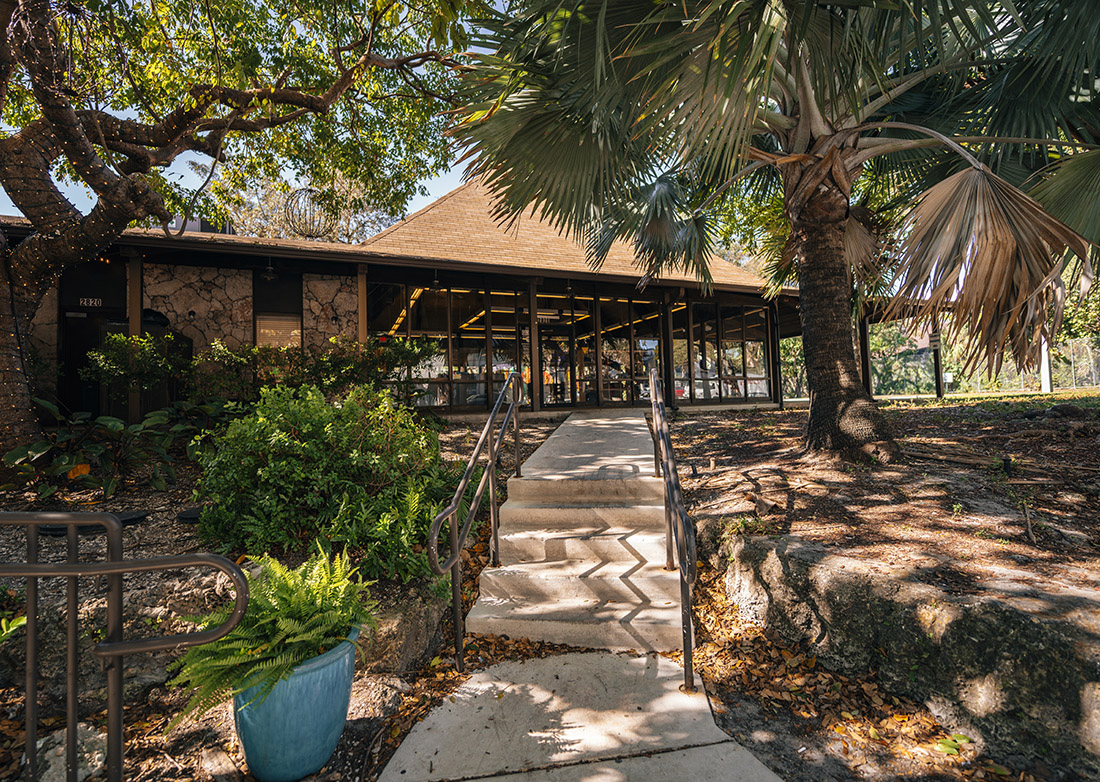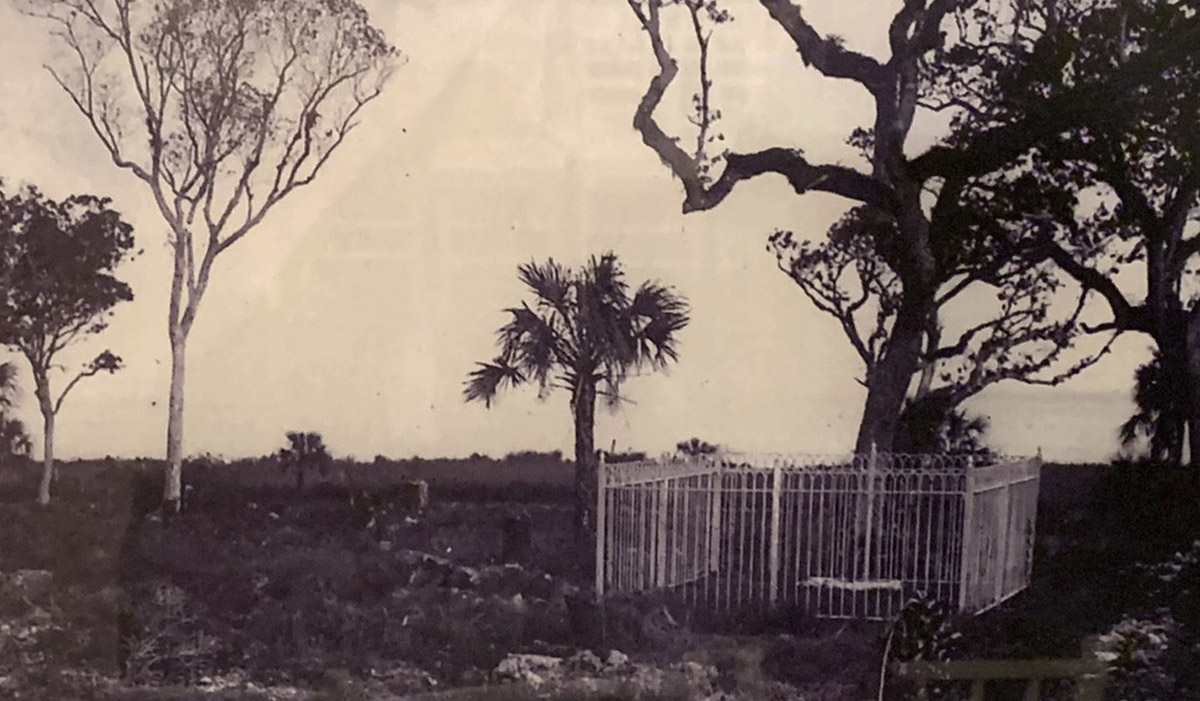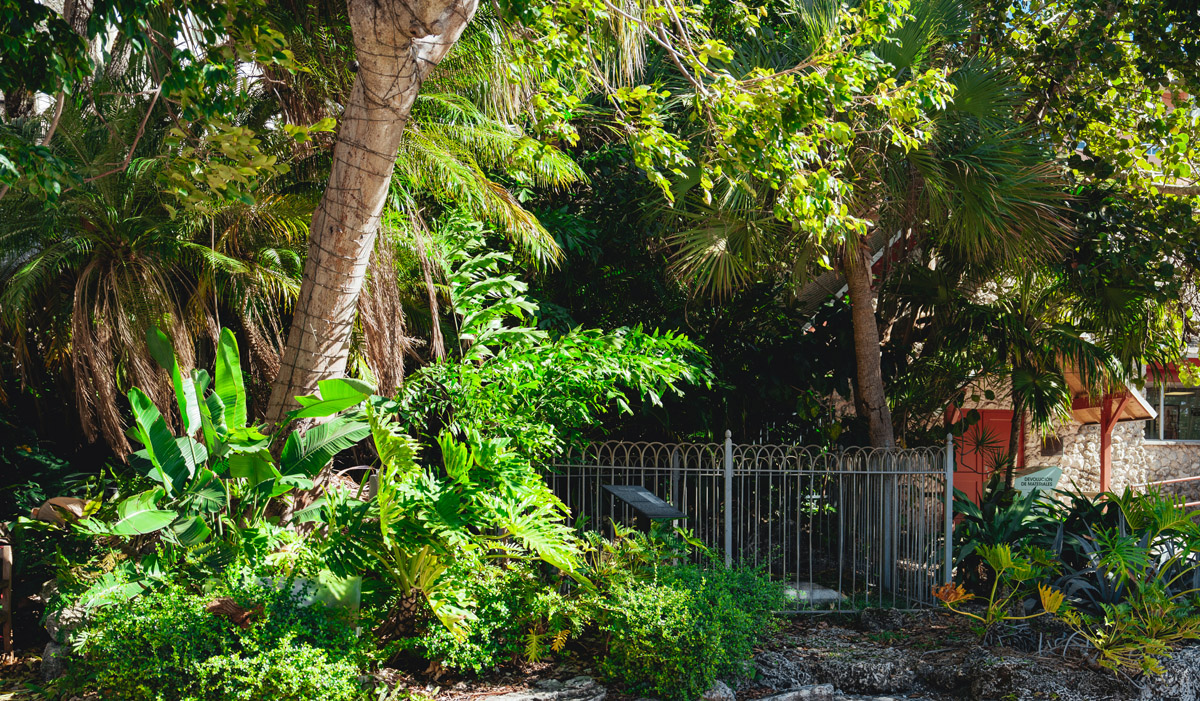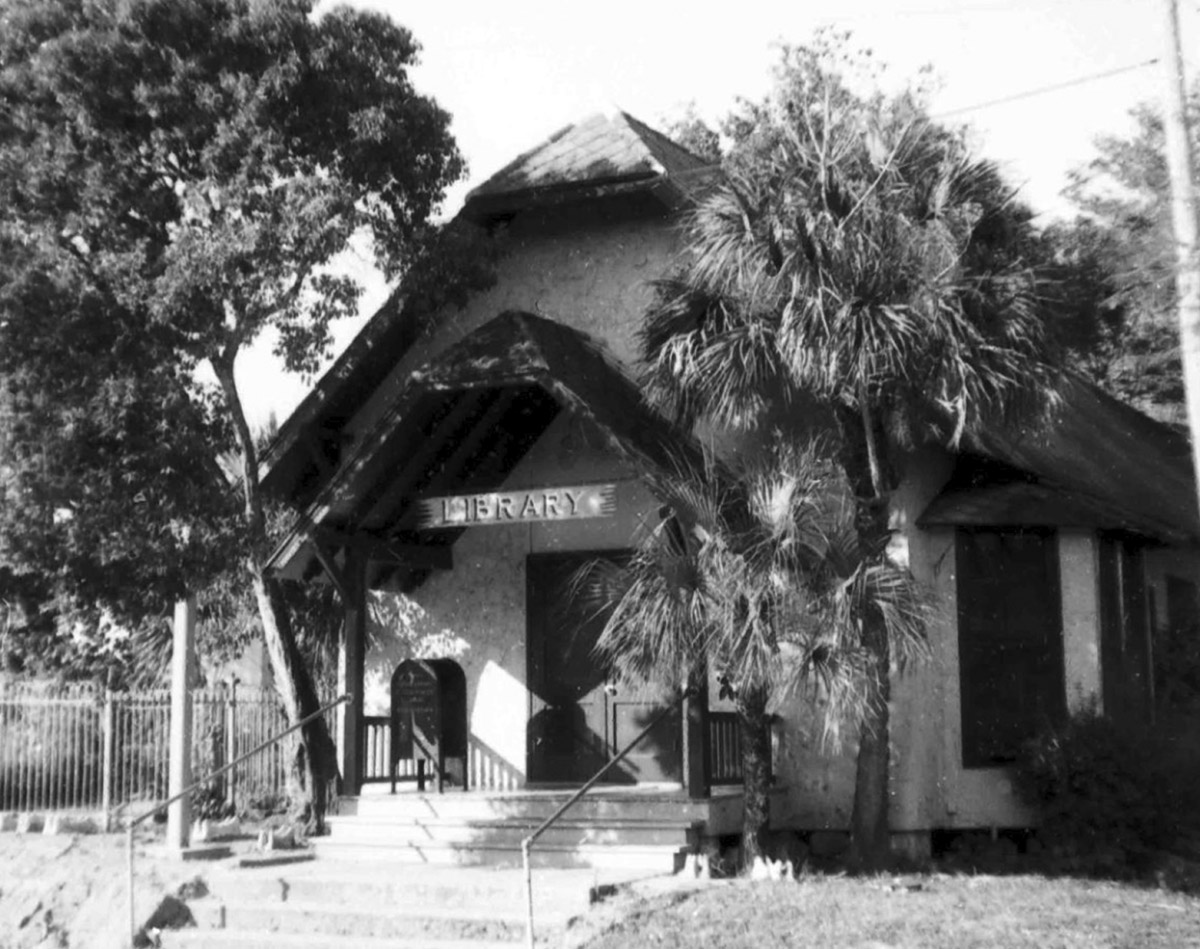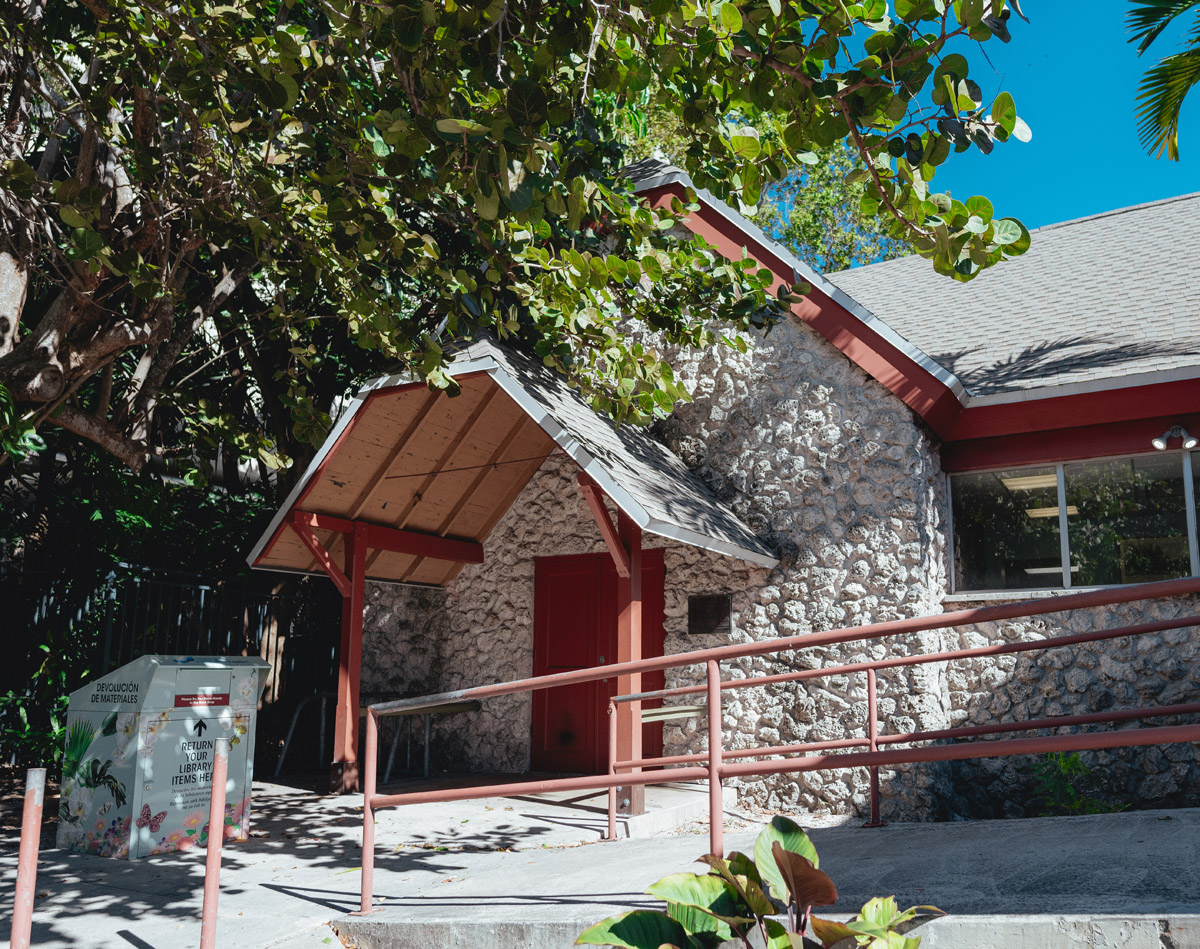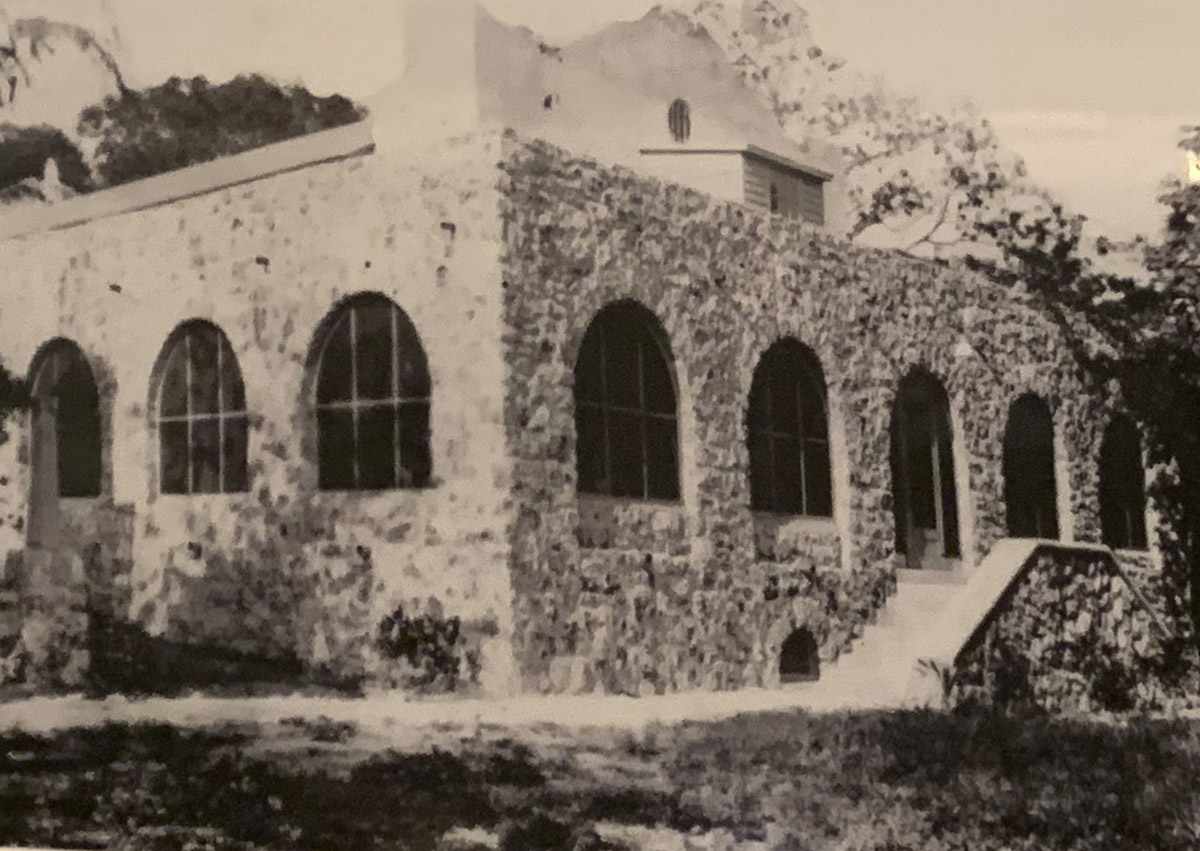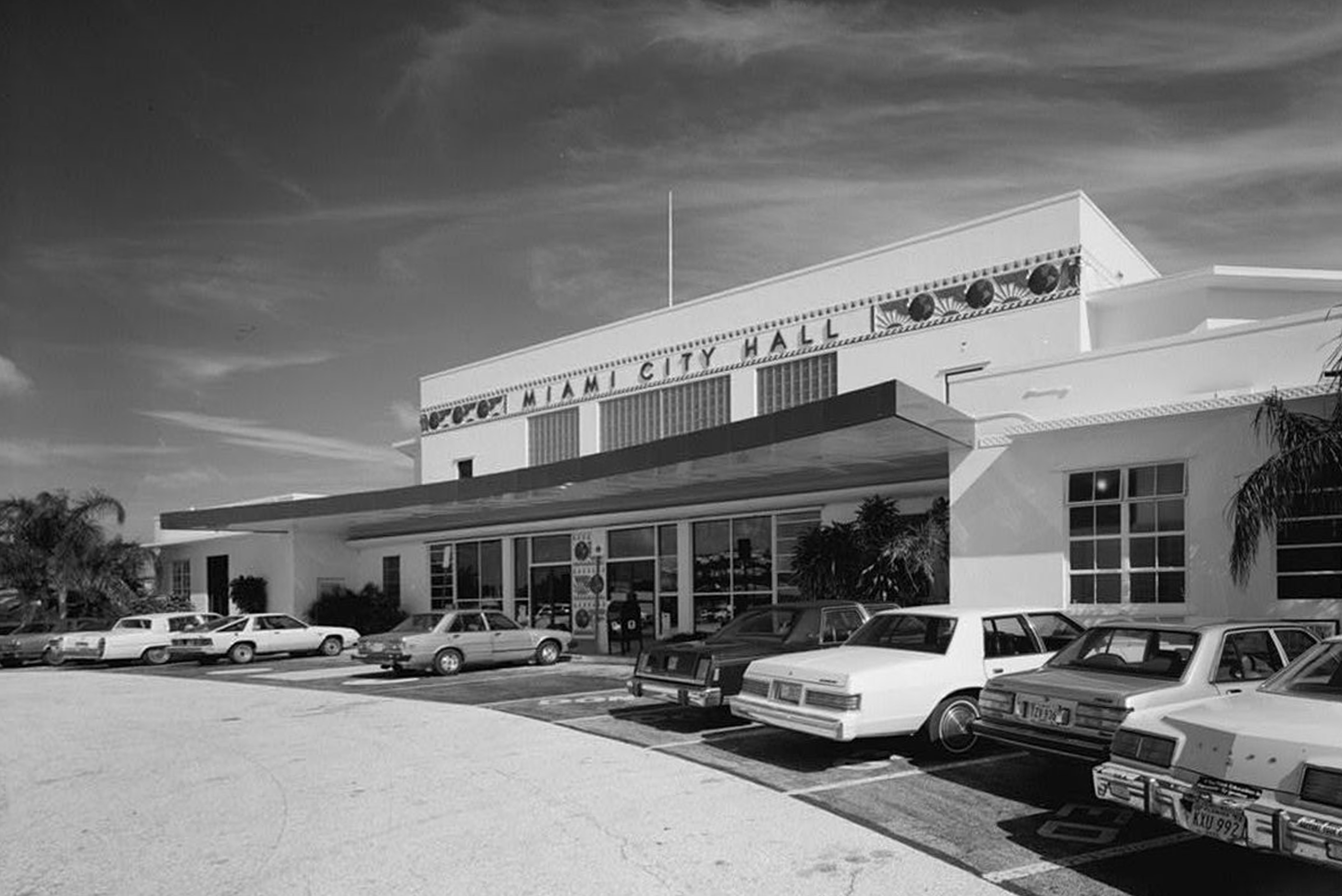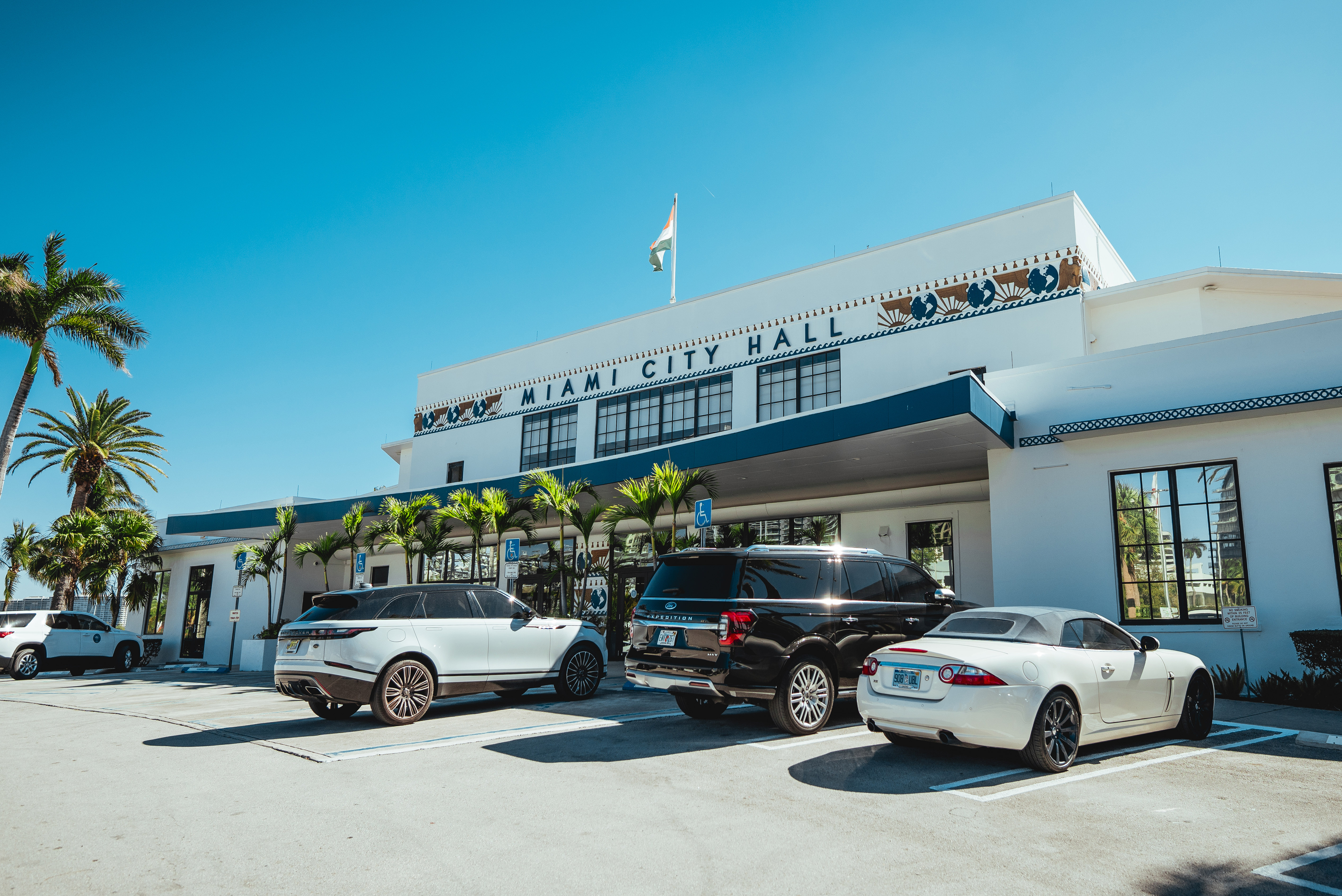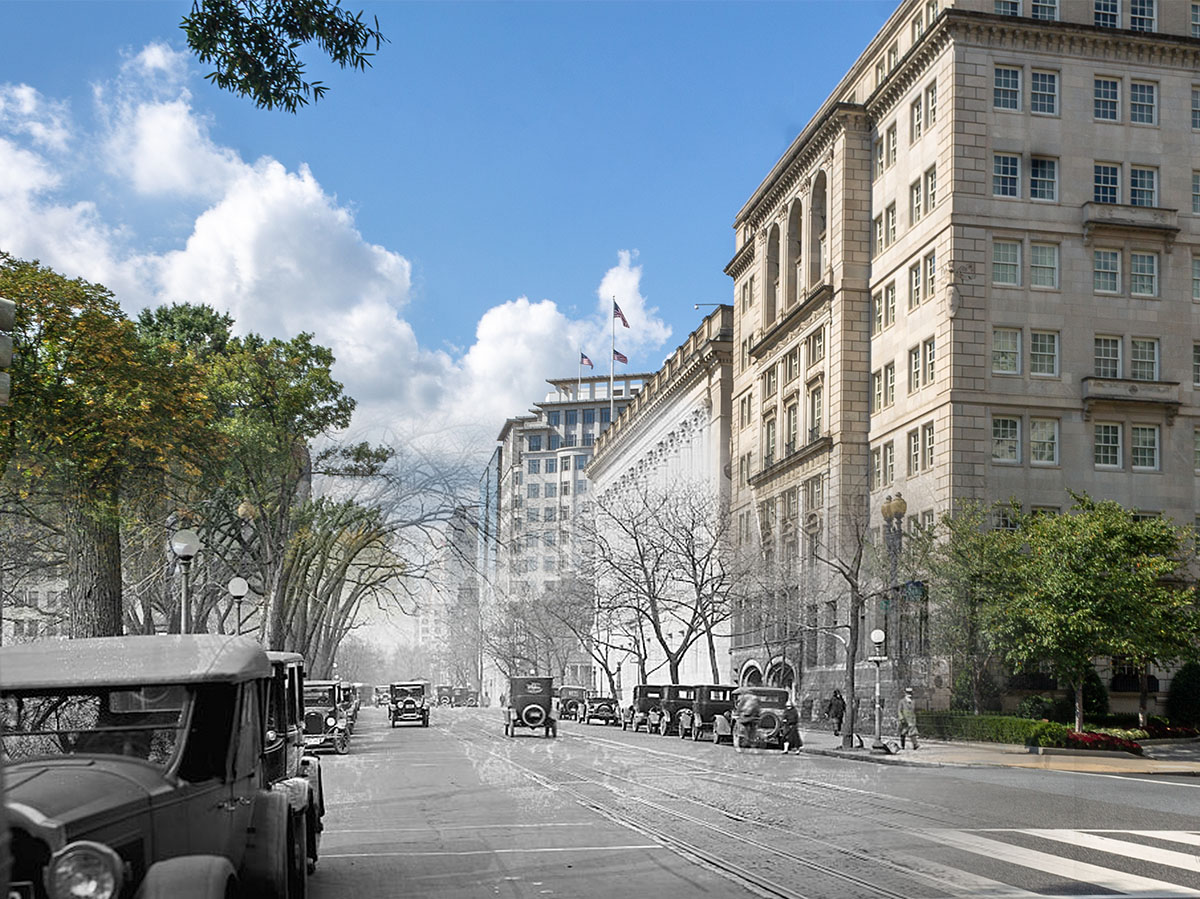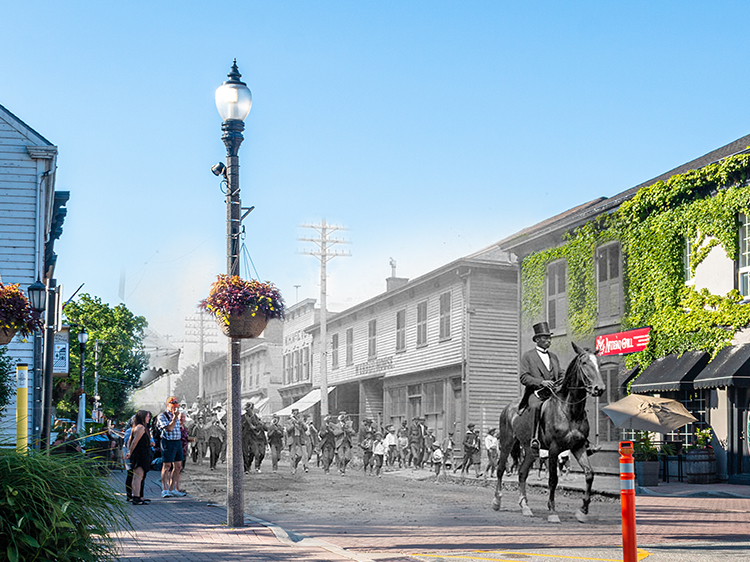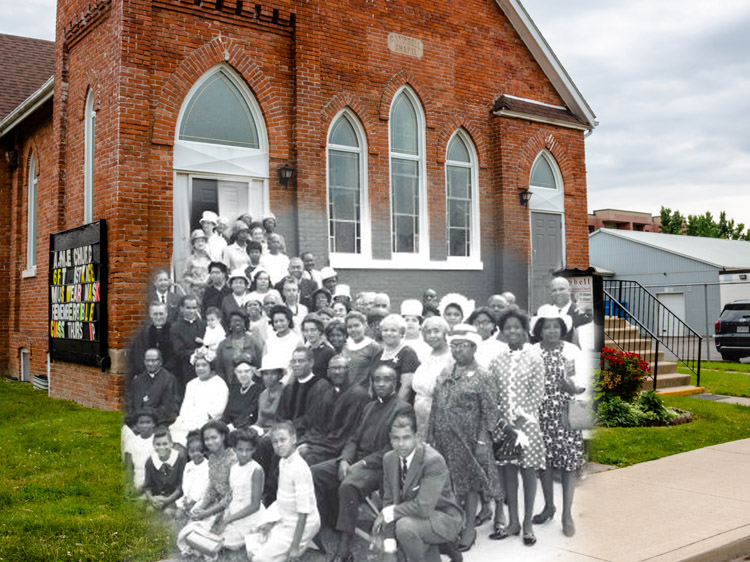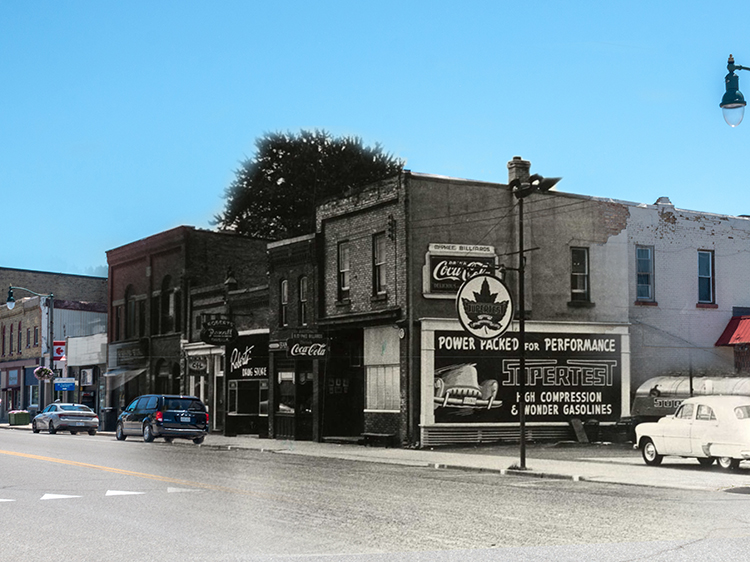Walking Tour
Welcome to Coconut Grove
Miami’s Historic Waterfront Village
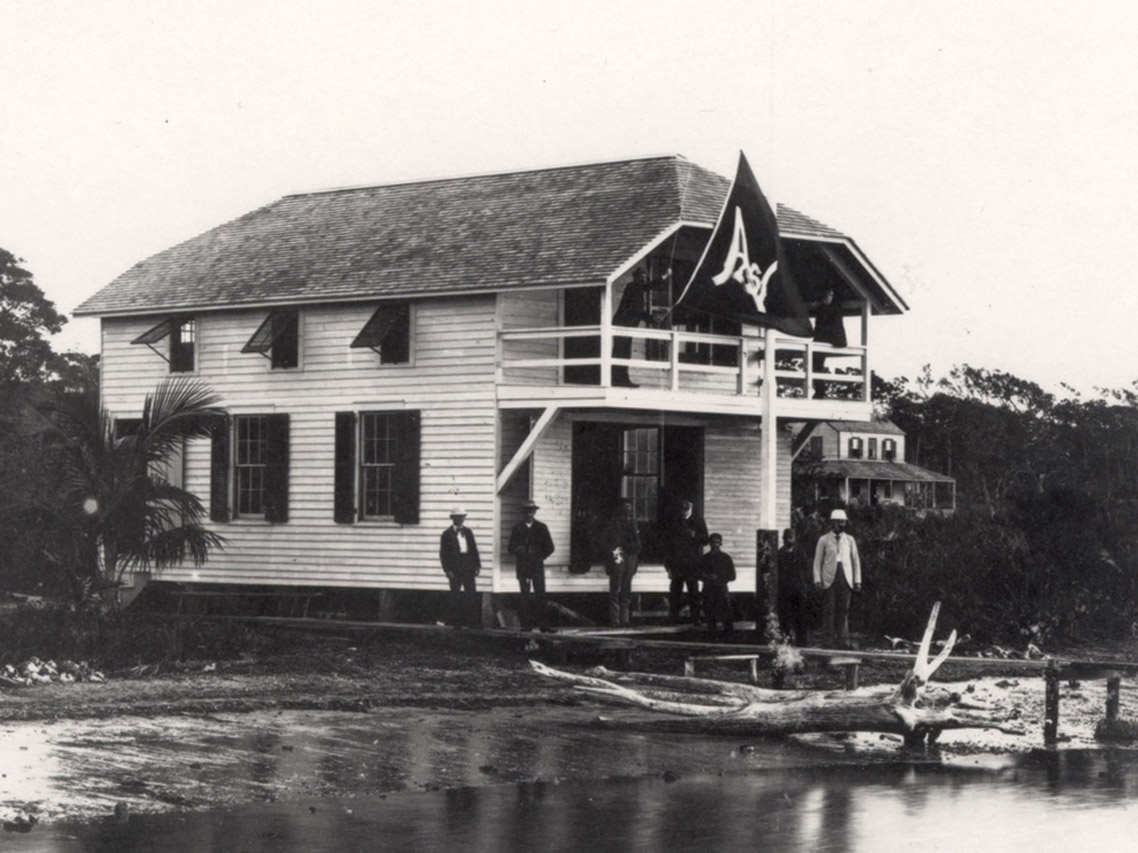
We invite you to take a walk or ride a bike down memory lane to discover the magic of Coconut Grove, a quaint and storied bay-front village within the City of Miami. Starting in the middle of the action at Main Highway, Grand Ave., and McFarlane Road, we have handpicked a few of our favorite spots around the Grove that are easy to reach on foot or by bicycle. After all, that’s how our early settlers got around!
Since the 1870s, people have been drawn to this unique destination for its natural beauty, pleasant tropical breezes, and easy access to the pristine waters of Biscayne Bay – likely the very same reasons you’re here.
This list of structures, sites, and institutions is far from complete. So whether you’re a local resident or a guest here enjoying our exquisite dining, shopping, and world-class hotels, there are countless attractions and things to do in Coconut Grove. To find out more, visit www.coconutgrove.com.
This project is a partnership with the Coconut Grove Business Improvement District.
1. Plymouth Congregational Church
One of the most historical churches in Miami, Plymouth Congregational Church is located just south of Coconut Grove, off Main Highway. Along the way, you’ll pass the Coconut Grove Playhouse at the corner of Charles Ave., and Ransom Everglades School, a renowned college-prep day school.
* * *
Visitors are drawn to the tranquility of the walled garden and the 300-year-old carved doors with original hardware. The interior of the vine-covered stone building is constructed along the lines of a classic basilica. In 2012, Plymouth Congregational Church was added to the U.S. National Register of Historic Places. In 2017, the congregation celebrated the 100th anniversary of its sanctuary. Drop by for Sunday morning worship at 10 a.m., or simply to stroll the beautiful grounds.
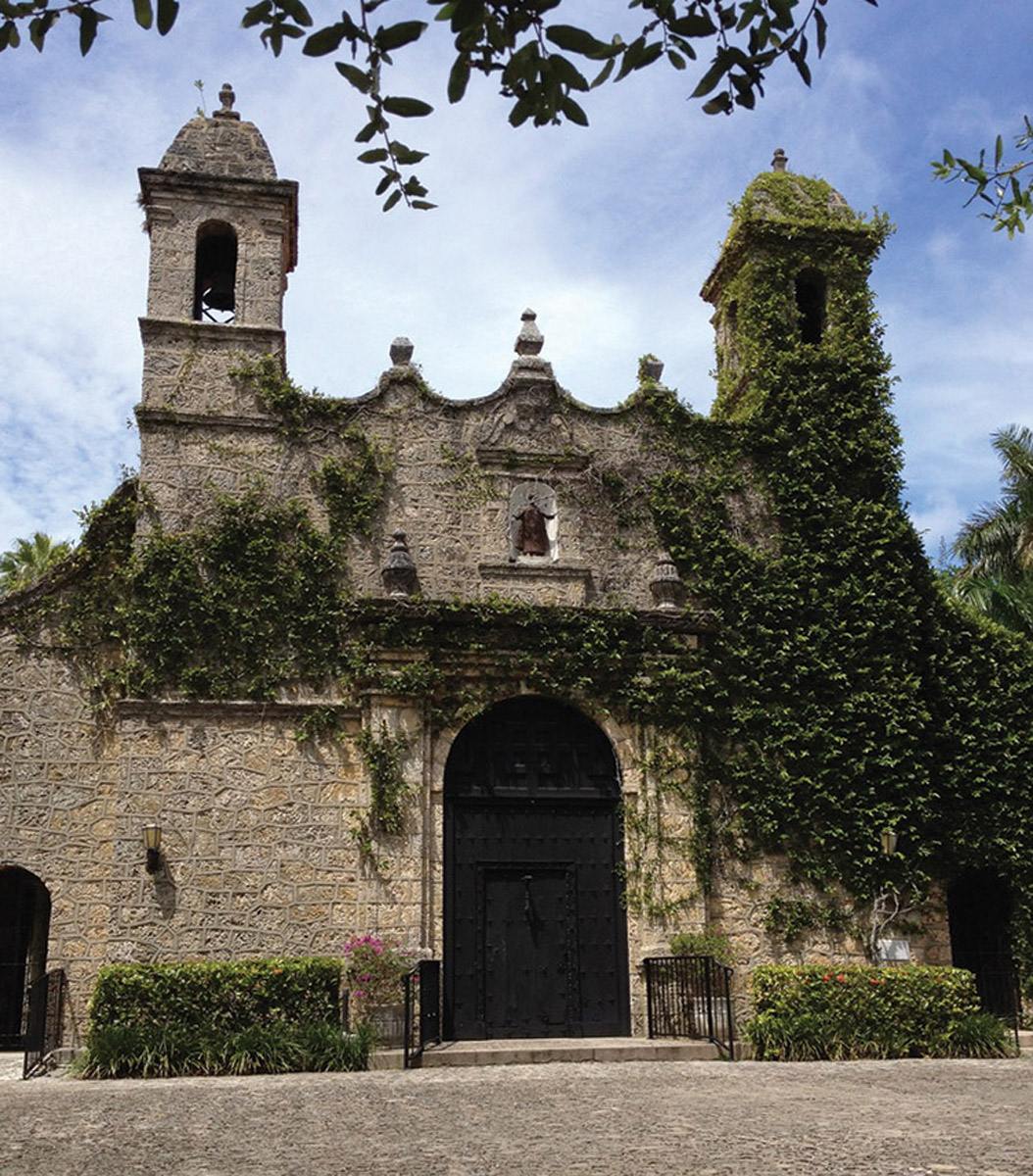

2. Ransom Everglades School
Founded in 1903, Ransom Everglades School is nestled across two scenic campuses in Coconut Grove. Serving students from grades 6 to 12, the mission of this distinguished coeducational institution. goes beyond academic excellence – they aim to cultivate graduates who embrace the belief that their purpose in this world is to contribute rather than simply receive.
* * *
3. Stirrup House
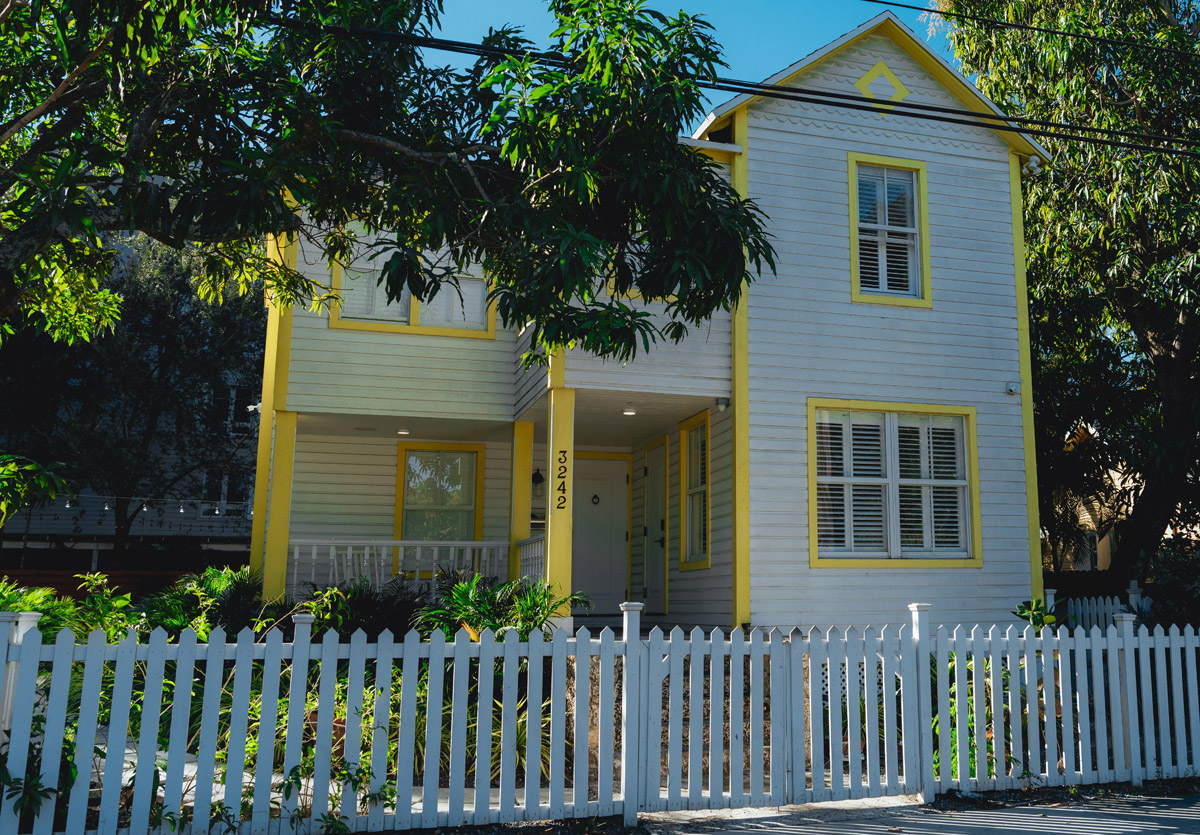
Built in 1897 by Bahamian immigrant Ebenezer Woodbury Franklin Stirrup, the historic Stirrup House serves as a symbol of Bahamian influence on South Florida's heritage and architecture.
* * *
The Grove takes pride in preserving its historic buildings and architectural heritage in order to ensure that the neighborhood’s unique history continues to be told through its buildings. Today’s fully restored Stirrup House is a two-story vacation rental – a perfect place to enjoy the renowned tranquil lifestyle of Coconut Grove.

4. Coconut Grove Playhouse
At one point, the Coconut Grove Playhouse was the “coolest" place to go for a movie – especially during the summer months. Opening on Jan. 3, 1927, as part of the Paramount chain, it was notable for being the second air-conditioned movie theater on Florida's east coast. A really big deal at that time, as was the in-house Wurlitzer organ – the largest in the U.S.
* * *
5. Original St. Stephen’s Church
Amidst the busy sidewalk cafes and trendy boutiques along Main Highway in the Grove is a relic of a small church, the original location of St. Stephen’s Episcopal Church. Credited with establishing St. Stephen’s original church was Flora McFarlane who came to Coconut Grove from London in 1886.
* * *
The Rev. C.P. Jackson was priest-in-charge until 1910 when a permanent rector was found, Father Soper, who served for 28 years. During his tenure, Coconut Grove was still a sleepy little vacation spot, rather isolated from the rest of the country, and largely ignored by travellers. That obviously didn’t last.
This original St. Stephen’s served the community well here for nearly 100 years until it was torn down to make way for a replacement church bearing the same name. Never fear though, because the tall mixed-use building on the same site where H&H Jewels now stands has incorporated the mission bell from the original structure.
6. Barnacle Historic State Park
Miami’s oldest home, The Barnacle is located here in the heart of Coconut Grove. Built in 1891, this charming historic estate sits atop a ridge facing Biscayne Bay in the eastern portion of a five-acre state park by the same name – and truly offers a glimpse of Old Florida during The Era of the Bay.
Home of Ralph Middleton Munroe, one of the Grove’s most interesting and influential pioneers, the Florida Park Service acquired this portion of Munroe’s original 40-acre home site in 1973. Today, it serves as a popular venue for moonlight concerts and films, sunset soirees, and annual special events – all sponsored by The Barnacle Society, the park’s official fundraising arm.
* * *
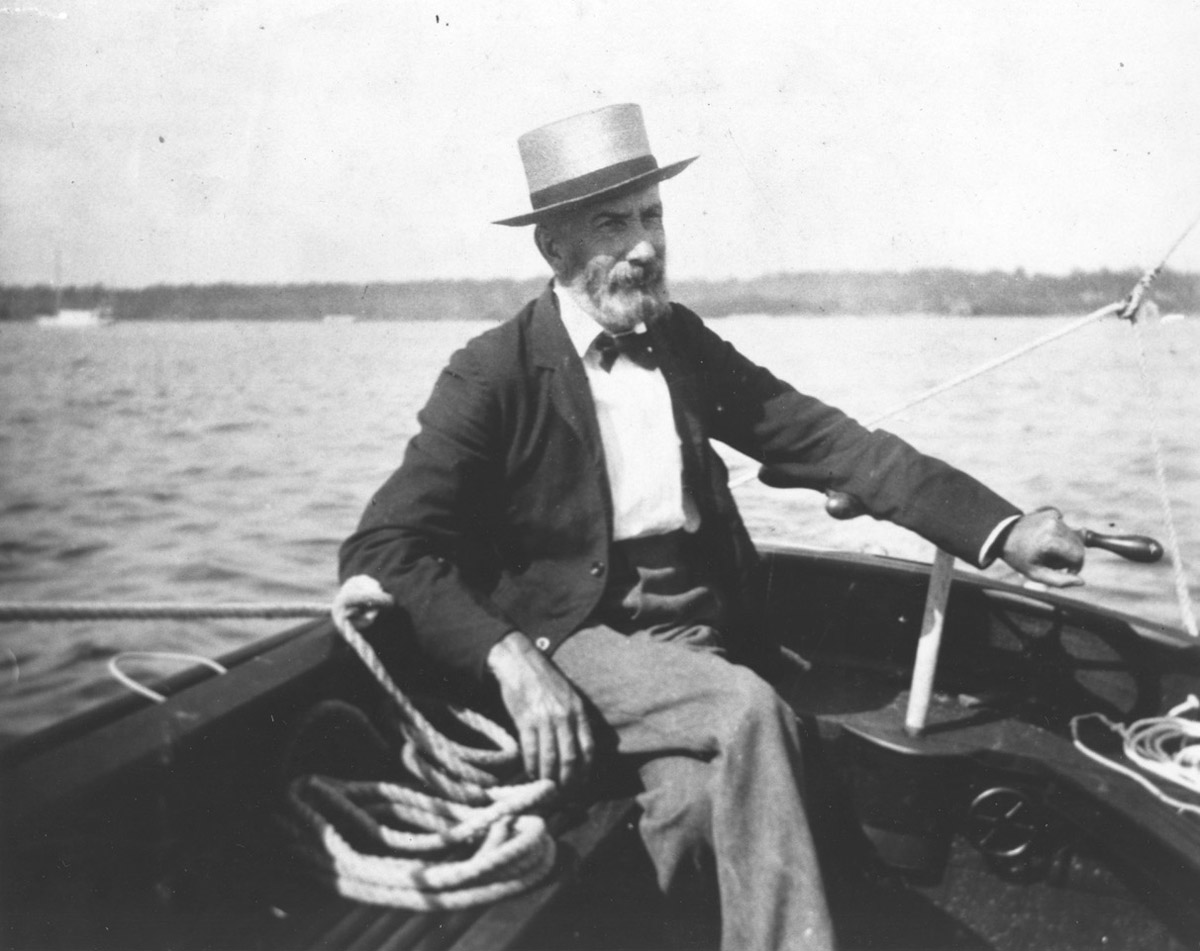
The main residence was designed and built by Munroe who also designed shallow-draft sailboats. He drew on the principles of boat design and his observations of traditional Caribbean home construction to make his house comfortable – and stable.
The central room of his new home was octagonal in shape. Presumably, this is how he came to call his home “The Barnacle,” because it looked like the small marine creature that fixes it self to boats and dock spaces.
As his family grew in numbers, Munroe was prompted to build a new first floor under the original house, by raising the home on beams in order to insert the new first floor below.
The entire home was built with Dade County pine and salvaged lumber from the Bay’s many shipwrecks. A rooftop cupola, complete with transom windows operated by ropes and pulleys, served as a ventilation system by creating a chimney effect to draw warm air up and out. Another addition, which served as Munroe’s library and study, was completed in 1913.
Guided tours take place several days a week. It’s the best way to get inside the main house, which is decorated with photographs taken by the Commodore, various tools of his trade, and family butterfly collections. The bedrooms are also decorated with Munroe family belongings.
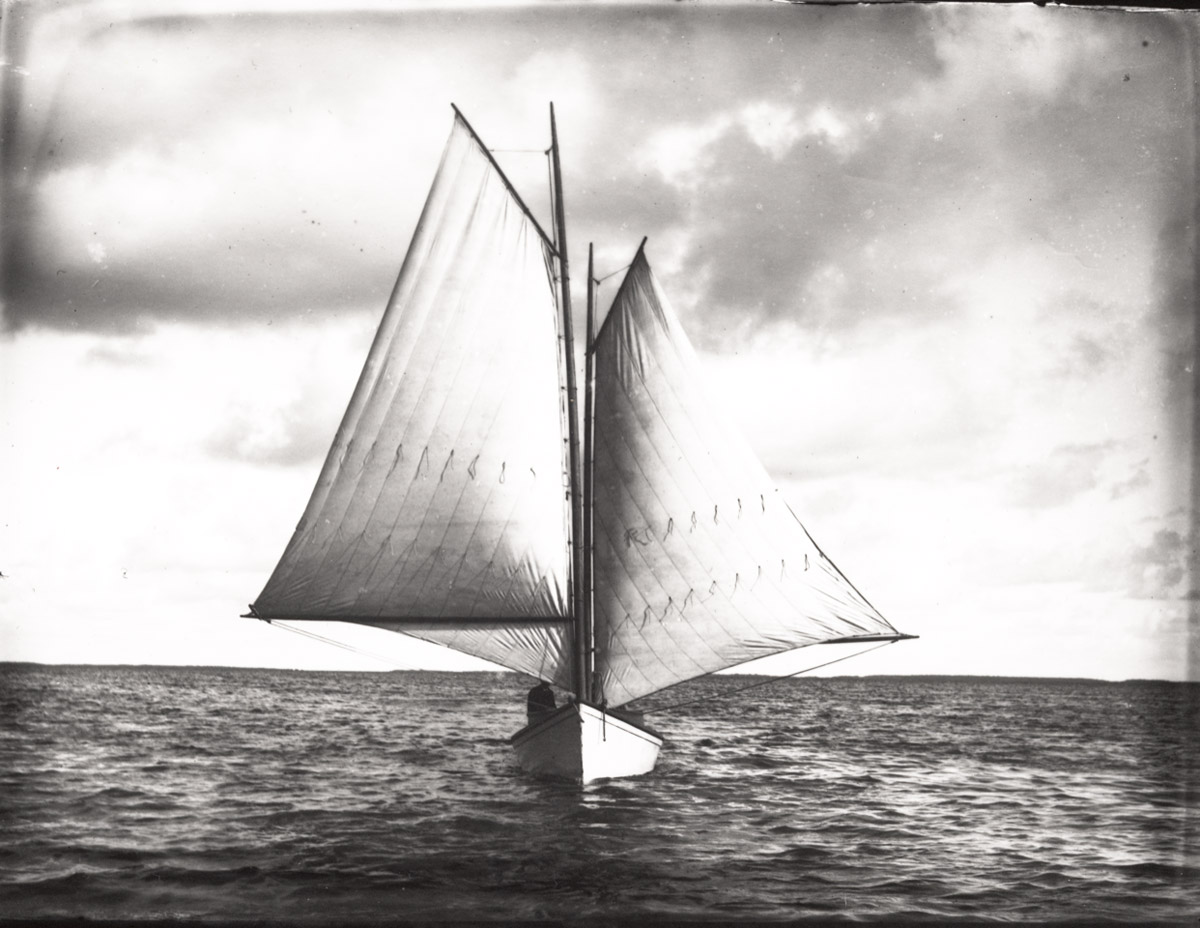
As a seaman, naturalist, and photographer, Commodore Munroe was a man who cherished the natural world around him. As a result, he preserved the original forest of tropical hardwood hammock between the business of Main Highway and The Barnacle, cutting out only a winding buggy trail barely wide enough for one vehicle. Today, it is one of the last remnants of the once vast “Miami Hammock” and appears much as it did in Munroe’s day.
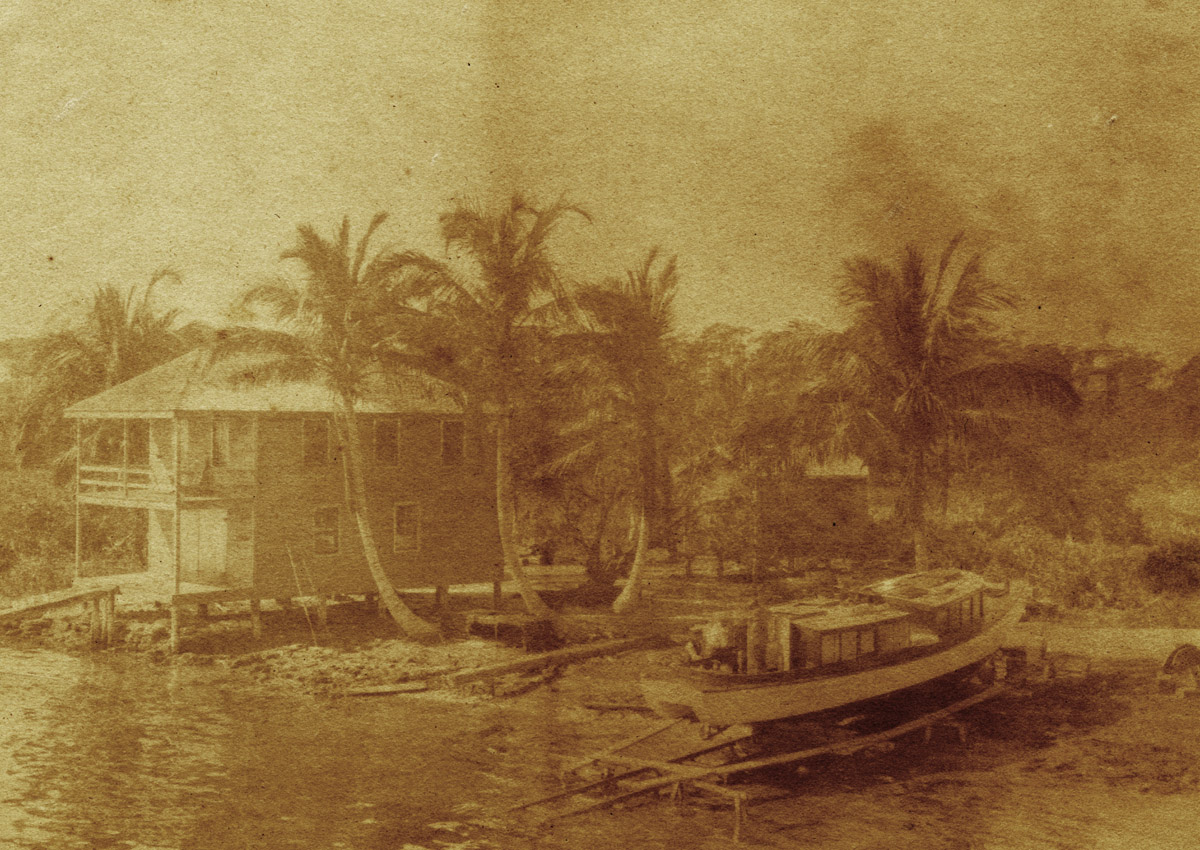
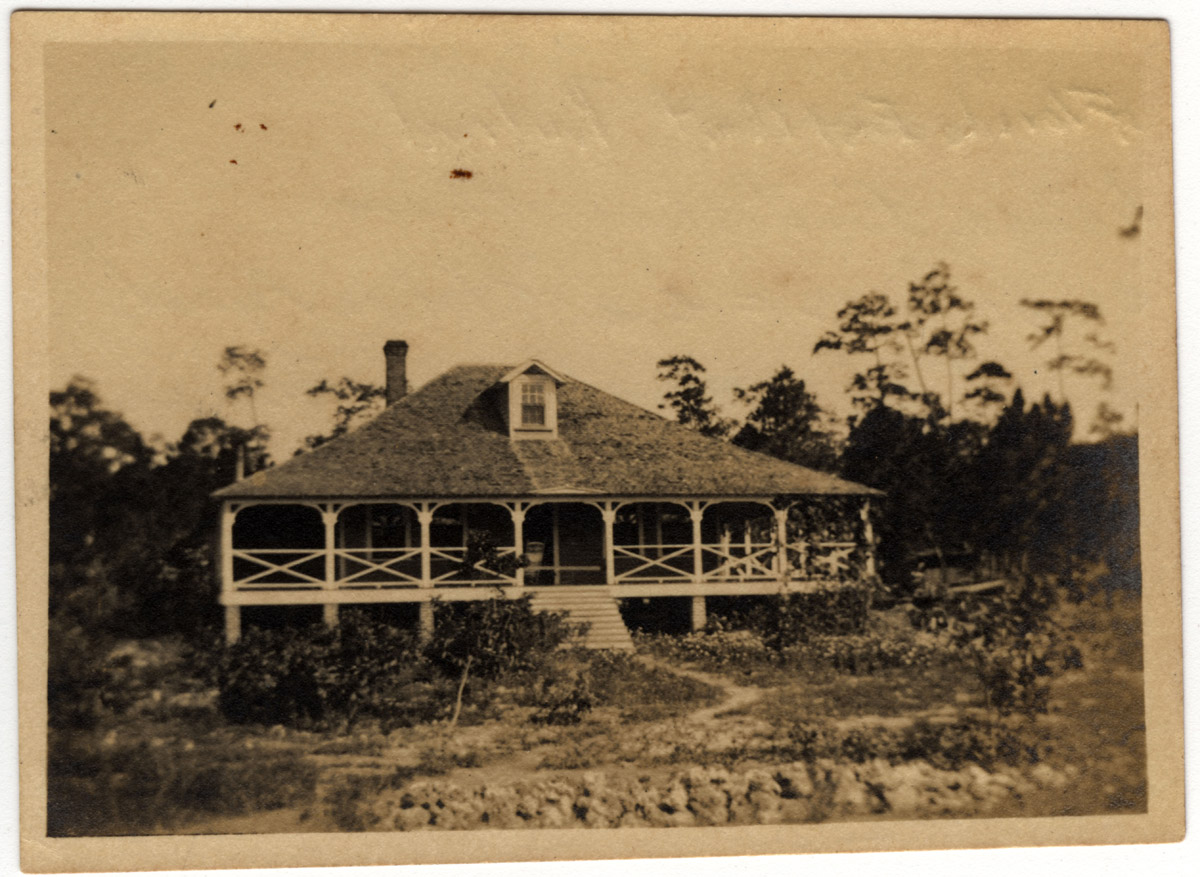

7. Coconut Grove Bank
Coconut Grove is a treasure trove of architectural wonders that mirror its vibrant history. Perhaps one of our most revered buildings is the old Coconut Grove Bank building. Founded on July 12, 1926, and now home to H&H Jewels, this prominent structure evokes nothing short of strength and solidity.
* * *
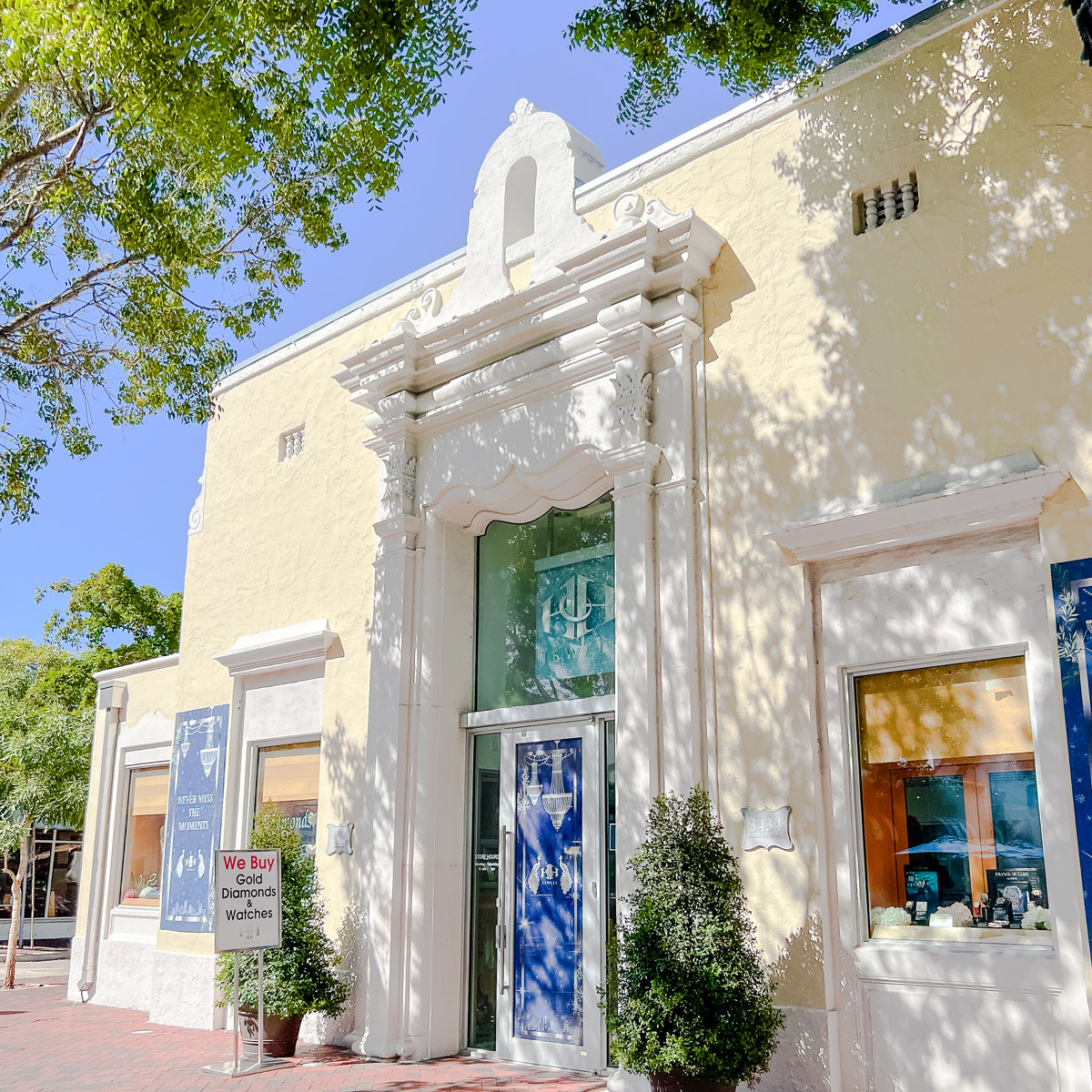
8. Peacock Park
The City of Miami is home to over 148 beautiful parks – and perhaps the proudest peacock of them all is located in the heart of Coconut Grove. A generous and inviting green space abutting Biscayne Bay, Peacock Park is just down the ridge from Coconut Grove’s central business district. Here you’ll find a plush field of grass surrounded by a protected hammock, with plenty of room for a full range of sports and a kid’s playground. Its 10-acres also accommodates myriad public events – including the widely acclaimed Coconut Grove Arts Festival.
* * *
You’ll also be drawn to the water's edge where you’ll find an inviting boardwalk bridge to relax, feel the ocean breeze on your face, and take in a view of the bay and mooring sailboats. Park hours are 7 a.m. to 10 p.m. seven days a week.
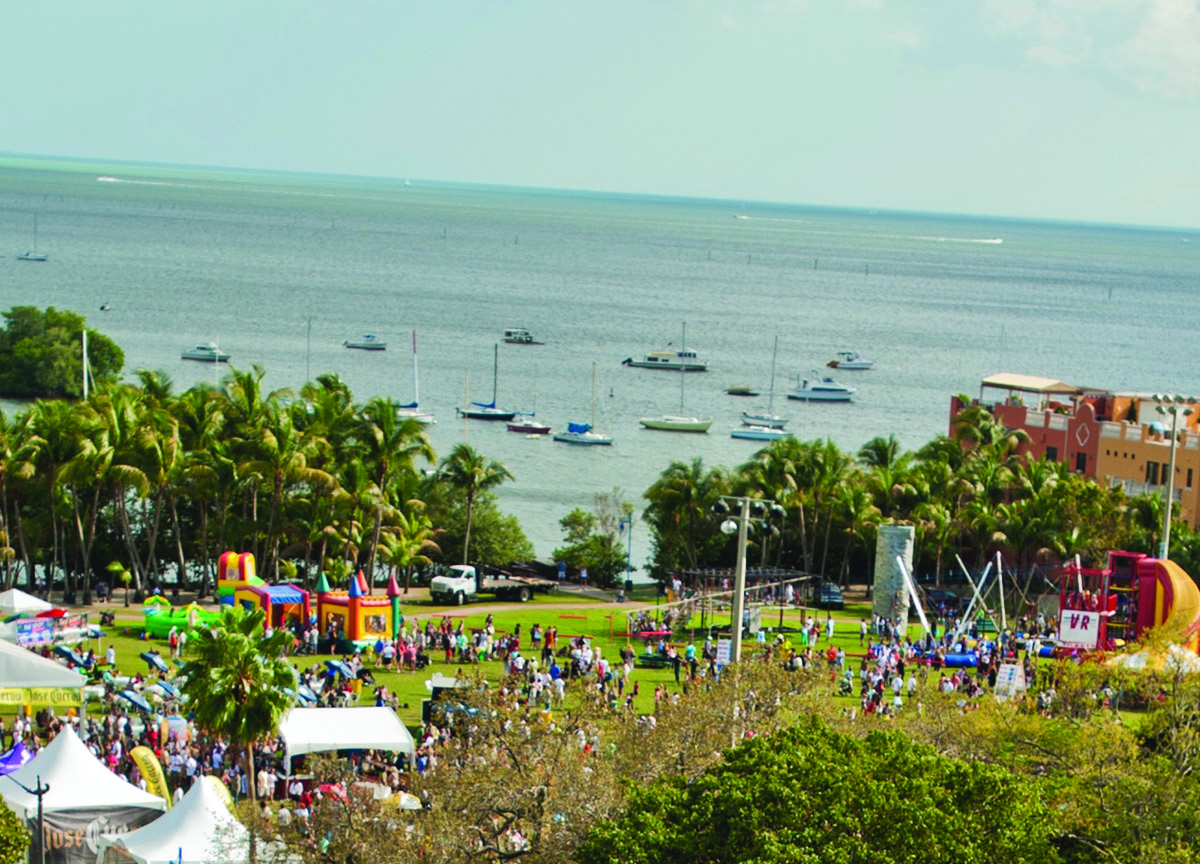
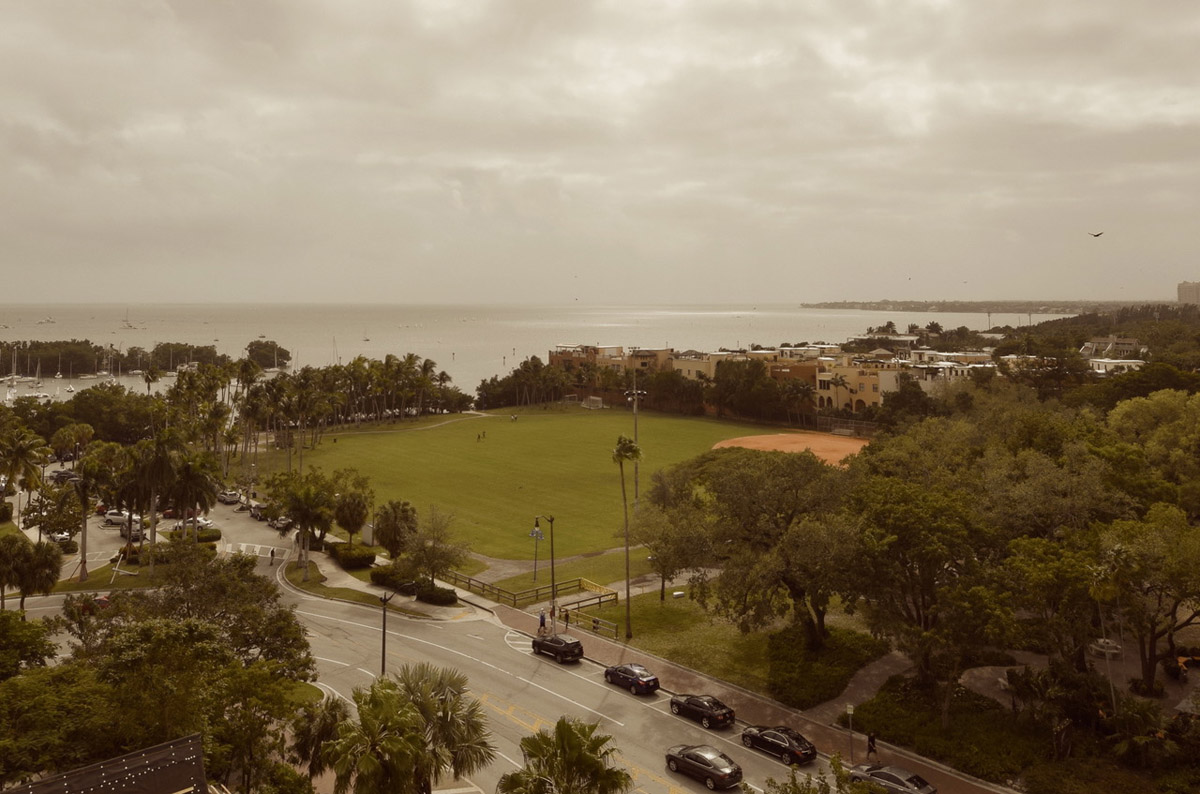
9. Eva Munroe's Gravesite
Because the land for the Coconut Grove Library was donated by one of the area’s prominent pioneers, Commodore Ralph Munroe, he had one stipulation – that the grave of his first wife Eva Amelia Munroe would be maintained here in perpetuity. Today, it stands as the oldest marked burial site in Miami-Dade County. Nestled into a lovely spot directly in front of Peacock Garden Cafe — named in honor of the Peacock family — there in repose are the remains of Eva Munroe, considered a leading personality of Coconut Grove.
* * *
10. Coconut Grove Library
The fledgling Coconut Grove Library got its jumpstart with the donation of several boxes of books by the family of steel magnate Andrew Carnegie. Turns out, his sister-in-law visited the library, originally housed in the Peacock General store, and came away impressed with it.
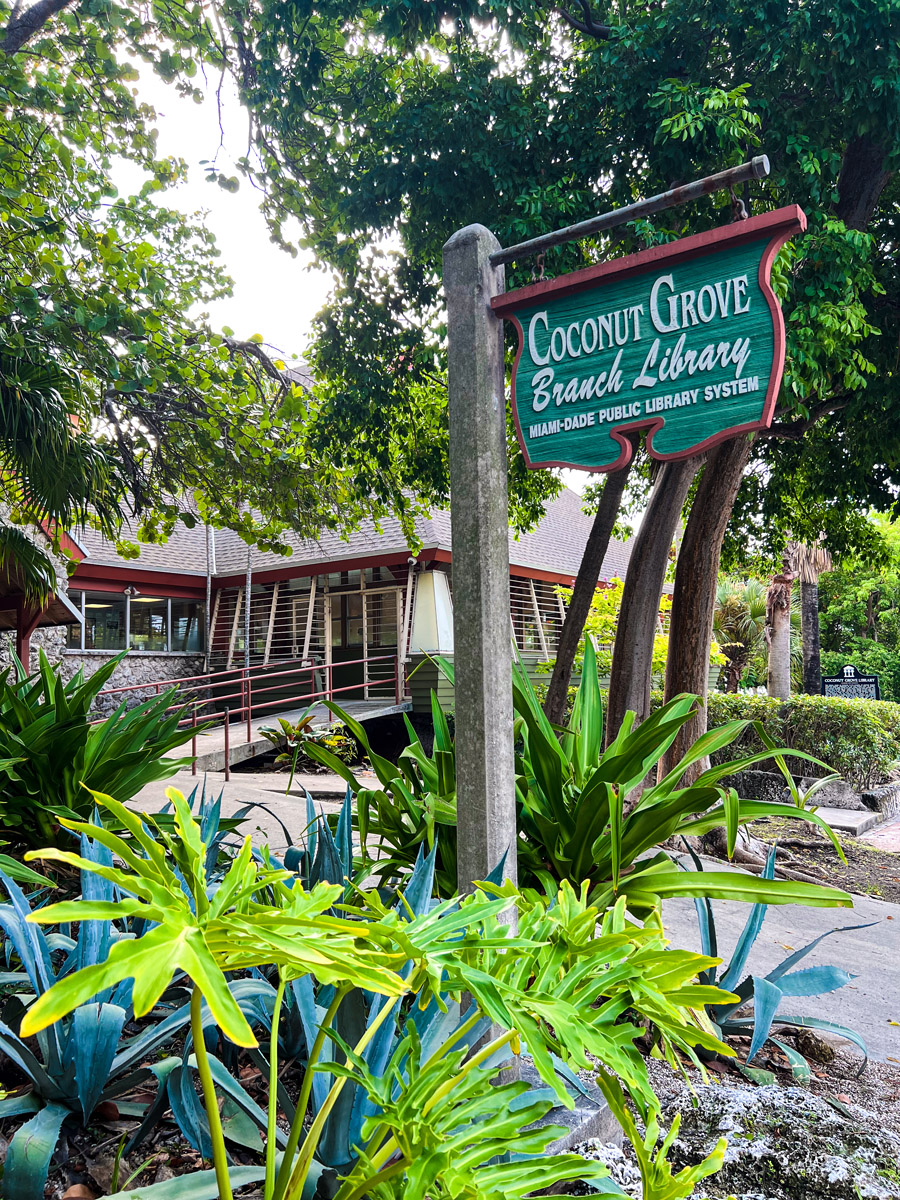
* * *
The land for the library was donated by Commodore Ralph Munroe with the stipulation that the grave of his wife Eva Amelia Munroe would be maintained there. The current library was built in 1963 and recently got a historic marker signifying its long history in the Grove. Operated by the Miami-Dade Public Library System, the building’s sweeping roofline can be seen slightly hidden behind thick tropical trees and foliage. The library is open every day excluding Sundays.
11. Woman’s Club of Coconut Grove
One of the best spots to begin your self-guided tour is the Women’s Club of Coconut Grove, located in the heart of the retail, dining, and hospitality district. With its striking coral rock and lime stone façade, this beautiful 1891 Historic Club House provides a picture-perfect look at those institutions that constituted life here in the 19th century.
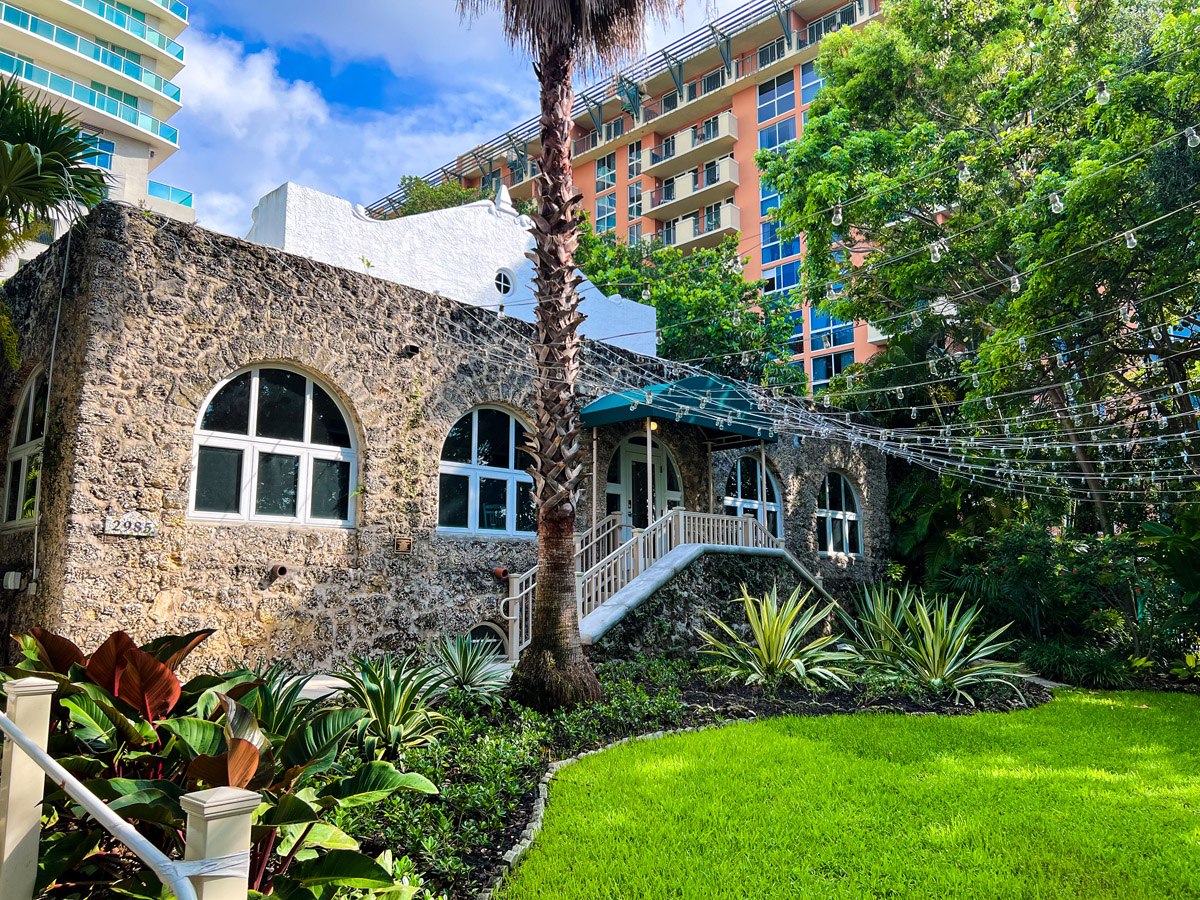
* * *
This prodigious rock building, designed by Walter Degarmo who lived only a mile away, sits on the ridge overlooking the waterfront and Peacock Park just across the street. It has been tastefully renovated and continues to maintain the intimate and elegant feel it has brought to so many over the years. Replete with warm wooden floors and a gorgeous stone fireplace, the old rustic charm of the Women’s Club continues to be an irresistible draw for local events, meetings, and weddings.
12. City Hall / Seaplane Terminal
You won’t need a passport for this trip back in aviation history. Just a short walk northward from Peacock Park along the bay, is a long drive to a bright white art-deco building set way back off S. Bayshore Dr. Located at Dinner Key, this area was once a small island in Biscayne Bay, but joined with the mainland during World War I to provide a training field for the U.S. Navy.
* * *
Though Pan Am ceased operations here in 1945, the present terminal building still stands as a monument to the golden years of aviation. Since 1954, the terminal has served as Miami City Hall. The restored mural that graces its ceiling in the commission chamber depicts the history of flight from Leonardo Da Vinci’s designs to the Clipper planes flown by Pan Am.
